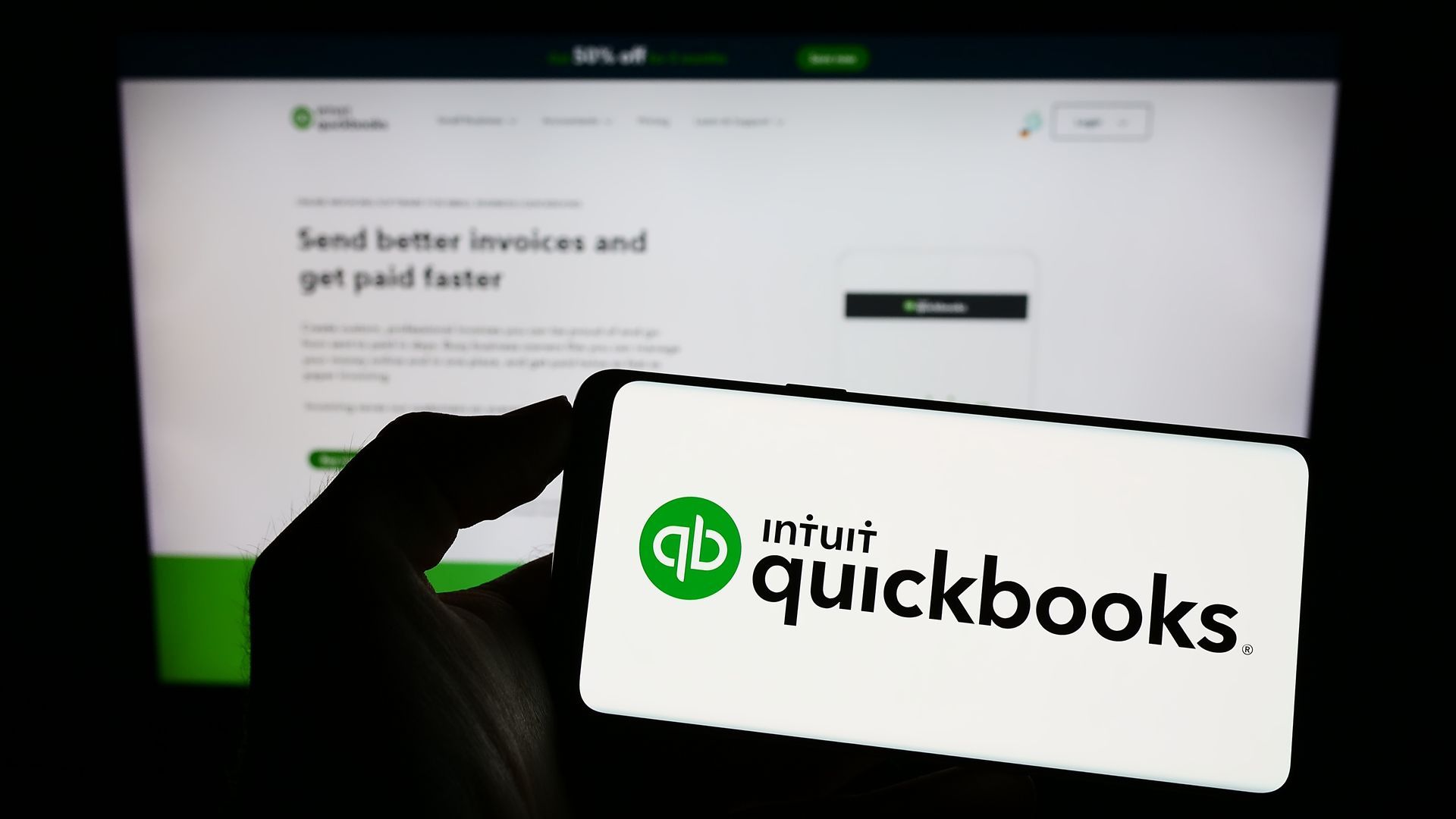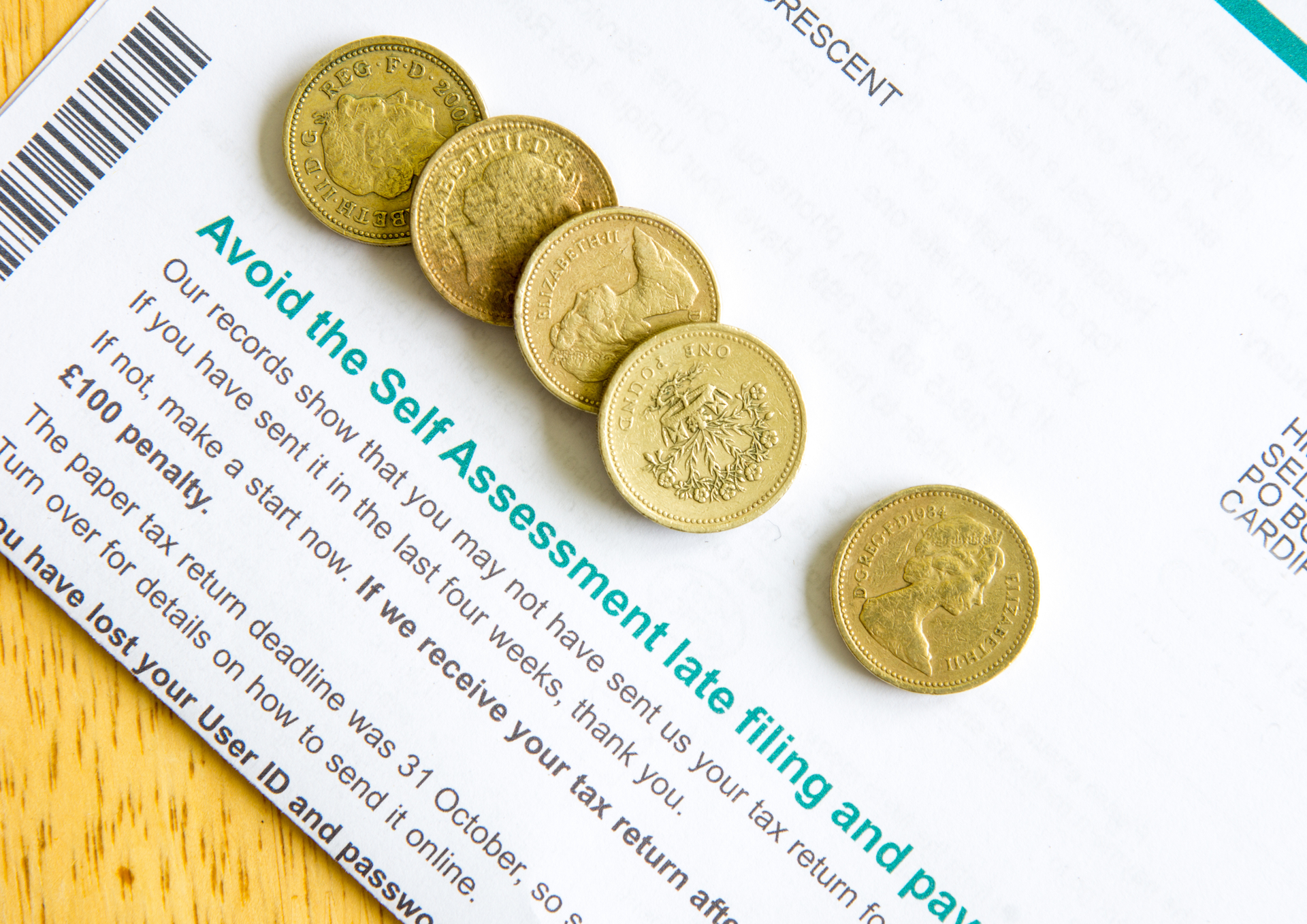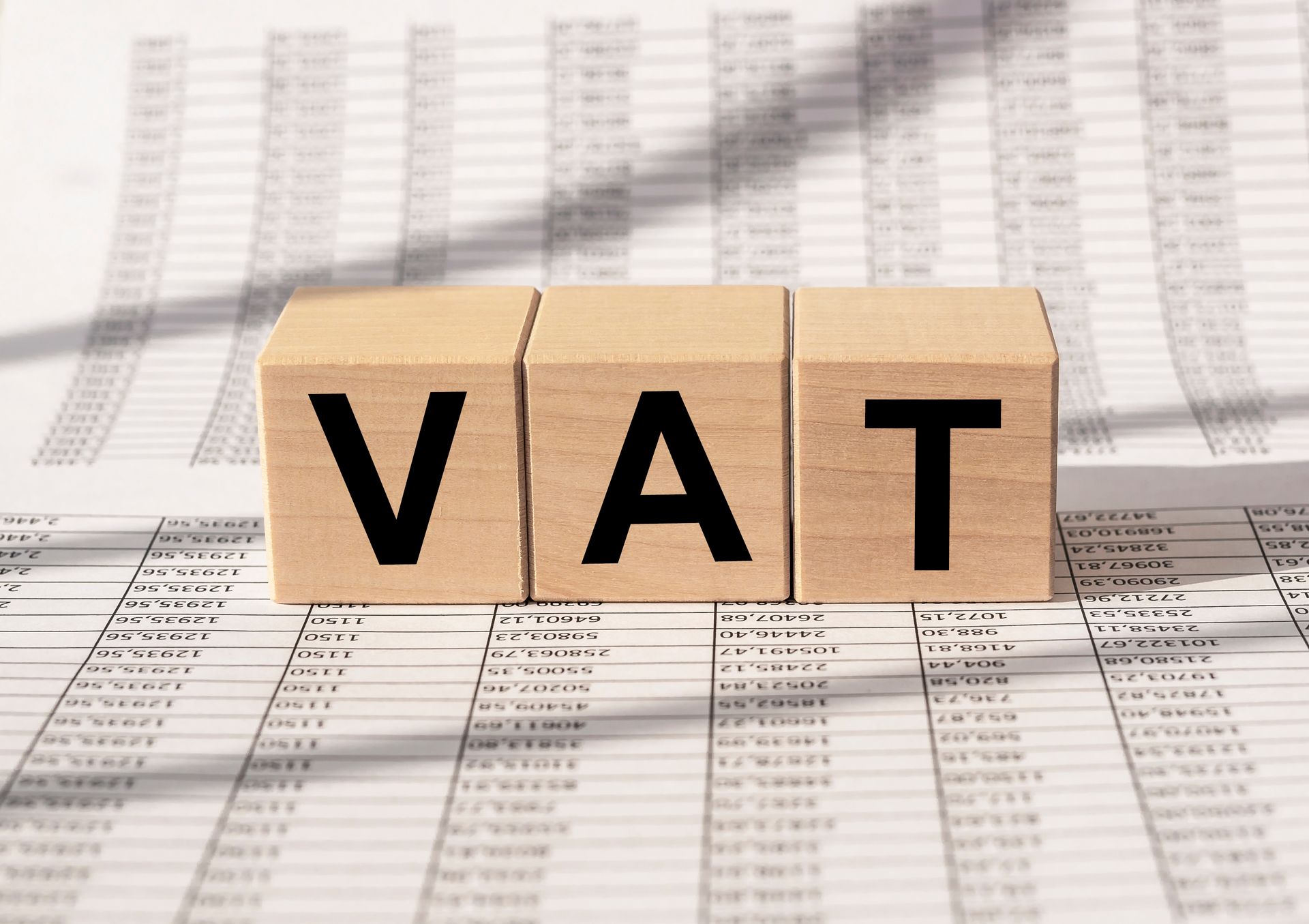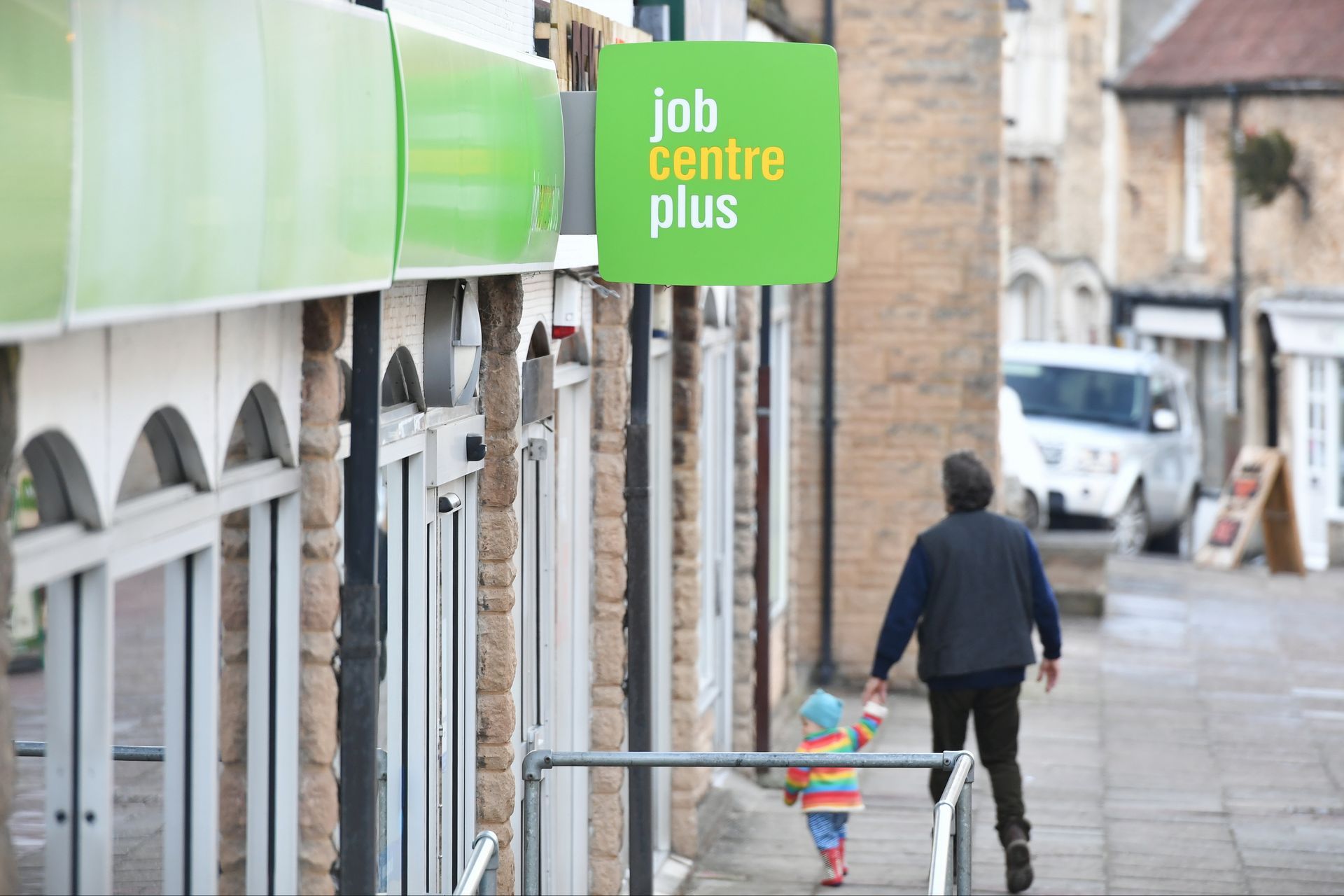Latest articles

How Governments Raise Tax Without “Raising Taxes” We keep hearing the same line every election: “We won’t raise Income Tax, VAT or National Insurance.” And technically, that can be true — yet the tax take still goes up year after year. So how do they do it? Simple: not through new rates, but through quiet tweaks, freezes and re-definitions that barely make the headlines. Let’s lift the lid. 1️⃣ The stealth tax nobody talks about: freezing thresholds When a tax band or allowance stays still while prices and wages rise, more income drifts into higher tax. That’s called fiscal drag, and it’s been the government’s best friend for years. The personal allowance has been frozen at £12,570 since 2021. If it had risen with inflation, it would be around £15,000 by now. That gap quietly pulls millions into the basic rate, and basic-rate earners into the higher-rate band. The same game plays out across benefits, CGT, pensions and VAT thresholds. No rate rise — yet the Exchequer pockets billions. 2️⃣ Shrinking reliefs and allowances Instead of cutting a tax rate, the Chancellor can cut the allowance attached to it. Take dividends: the tax-free allowance has been sliced from £2,000 to £500 . Capital gains allowance? Down from £12,300 to £3,000 . No headlines, just smaller numbers on the same forms — and higher bills for those who notice too late. 3️⃣ Moving the goalposts Rules change. Definitions change. What used to be tax-free gets re-classified. Examples: Company cars now taxed on a more precise CO₂ scale. Salary-sacrifice schemes that once cut NIC bills for gym memberships or tech purchases are now limited to EVs, bikes and pensions. Even the definition of “trivial benefit” has been tightened by guidance rather than legislation. Every tweak adds a few more taxpayers to the pot. 4️⃣ New classes, not new taxes Politicians can keep their “no new tax” promise while still inventing one. Rebadging is a classic move: Apprenticeship Levy, Bank Surcharge, Health & Social Care Levy (since absorbed back into NIC). Now the talk is of NIC on rental income or wider partnership charges — technically “broadening the base”, not increasing a rate. It’s semantics, but effective semantics. 5️⃣ Compliance and digitalisation HMRC’s push for real-time data — MTD for VAT, PAYE integration, eventually MTD for Income Tax — isn’t just about admin. It’s about closing gaps and boosting yield. Every mismatch spotted by software is another pound recovered. They don’t need higher rates when better data does the work. 6️⃣ The optics game Chancellors rarely want to headline a tax rise. Freezes, relief cuts and “fairness reviews” sound dull but feel safer politically. By the time the impact lands, a different Chancellor is usually holding the brief. 🔍 What this means for you and your business Don’t fixate on rates alone — look at thresholds, allowances and definitions. Model your numbers as if everything you earn will creep into the next band sooner than you expect. Keep pension, ISA and dividend strategies under review — they’re easy political targets. And when you hear “no new taxes” on Budget Day, remember: that doesn’t mean no more tax.

A lot of great community projects start informally — a few people, a good idea, and the motivation to make a difference. Over time, though, many groups reach a point where the question comes up: “Should we register as a charity?” There’s no single answer that fits everyone. But understanding the pros, cons, and timing can help you make a confident decision. The Benefits of Registering Gift Aid on donations This is often the main reason groups register. Once you’re a registered charity, you can claim an extra 25p for every £1 donated by UK taxpayers. That’s effectively a 20%+ boost to your fundraising — without asking supporters to give more. Access to funding Many grant bodies, councils, and corporate funders will only work with registered charities. If you’re planning to grow, you’ll eventually find that registration opens doors that would otherwise stay closed. Credibility and trust Adding “Registered Charity No. XXXXX” to your materials signals that you’re accountable and established. It reassures donors, volunteers, and partners that your finances and governance are transparent. Tax and business rate relief Charities don’t usually pay corporation tax on income used for charitable purposes and can receive up to 80% off business rates — a major help if you rent or own premises. Supplier discounts From fundraising platforms to software, energy, and insurance providers, many suppliers offer reduced rates to registered charities. The Trade-Offs More admin Registration means you’ll need to file annual accounts and returns with the Charity Commission . It’s not overly complex, but it does require organisation and consistency. Governance responsibilities Charities must have trustees who oversee activities and finances. They generally can’t be paid, and funds must only be used for charitable purposes — which means less flexibility than an informal setup. Oversight and regulation The Charity Commission has the power to intervene if governance or finances aren’t up to standard. This oversight helps protect donors and beneficiaries, but it also means accountability is higher. Setting up properly You’ll need a constitution, a clear charitable purpose, and a board of trustees. Getting that groundwork right saves headaches later. The Hidden Costs to Be Aware Of Registering can bring new income opportunities — but also some financial responsibilities: Independent Examination (IE) Under £25,000 income – No external review needed; basic accounts are fine. £25,000–£250,000 – An IE is required, but this doesn’t have to be a professional accountant. A volunteer with the right skills often suffices. Over £250,000 – The IE must be done by a qualified accountant. There may be a fee unless you find someone willing to volunteer. Audit threshold Once your income exceeds £1 million , or certain asset/liability levels, you’ll need a full audit. That’s more work and higher cost. Professional services As your charity grows, you might also decide to outsource bookkeeping, payroll, or financial reporting. Gift Aid vs Costs — A Simple Example Here’s a simple way to see how Gift Aid can make a difference. If your group receives £20,000 in donations each year, claiming Gift Aid adds another £5,000 , giving you £25,000 in total . Even if you spent up to £500 on an independent examination, you’d still be around £4,500 to £5,000 better off than staying unregistered. At £50,000 of annual donations, Gift Aid would bring in £12,500 , for a total of £62,500 . With typical examination costs of around £1,000 , that’s an extra £11,500 in available funds. And if donations reach £100,000 , Gift Aid could add £25,000 , bringing your total to £125,000 . Even allowing about £1,500 for professional review costs, you’d still see a net gain of roughly £23,500 . Rough examples, but enough to show that Gift Aid usually outweighs the extra admin. When It Makes Sense to Register ✅ Income over £5,000 Once you pass this threshold, you’re eligible to apply. For many groups, this is where Gift Aid starts to make a real difference. ✅ Mainly donation-funded If your supporters give regularly, Gift Aid can add thousands each year without increasing donations. ✅ Looking to expand Planning to apply for grants, employ staff, or lease a property? Registration is often required to do so. ✅ Wanting structure and accountability Formal status helps clarify who’s responsible for decisions and how funds are used — which reduces the risk of future disputes. When You Might Stay Informal If your group raises less than £5,000 a year and intends to stay small, the admin may not be worth it. If your income mainly comes from trading — such as selling products or services — the benefits of Gift Aid may not apply. And if your activities are primarily social or recreational rather than charitable, you might not meet the Charity Commission’s definition of a charitable purpose. Bottom Line Registering as a charity can bring credibility, access to funding, and a welcome boost through Gift Aid. But it also adds structure, rules, and a layer of accountability. If your group is growing, r egularly raising over £5,000 , or planning to expand its reach, now’s a good time to explore registration. With a clear constitution and some light-touch financial support, becoming a charity can set you up for long-term impact and sustainability.

A practical guide for small businesses Many small businesses rely on contractors — it’s often the best way to access specialist skills and keep costs flexible. But with HMRC tightening up on IR35 and off-payroll working rules , getting this right has never been more important. Handled properly, it protects your business from unexpected tax bills and penalties, and it keeps relationships with contractors and agencies running smoothly. Here’s what you need to know for 2025/26 , what changed in April 2025, and how to stay compliant without adding unnecessary admin. What IR35 actually covers IR35 exists to make sure people working like employees but through a limited company (often a personal service company , or PSC) pay roughly the same tax and National Insurance as regular employees. There are two sets of rules: Chapter 8 (IR35) — applies mainly to small private-sector clients. The contractor’s company is responsible for determining employment status and paying any tax. Chapter 10 (Off-payroll working) — applies to medium and large clients, and the client must determine status and operate PAYE if the work is “inside IR35.” If you’re a public sector organisation or a medium/large private company, the responsibility sits with you. Smaller businesses are exempt — for now. Who decides employment status in 2025/26 Public sector: You must assess each engagement and operate PAYE for “inside IR35” roles. Medium/large private sector: Same as above — you assess, issue a Status Determination Statement (SDS) , and deduct tax if needed. Small private sector: You’re exempt from Chapter 10, so the contractor’s company handles the IR35 test. But you must confirm your size if asked. What counts as “small” In 2025/26 , you’re classed as a small business if you don’t meet two or more of these: Turnover over £10.2 million Balance sheet total over £5.1 million More than 50 employees If you’re below these thresholds, Chapter 10 doesn’t apply — but you still need clear records and a consistent process. From April 2025, the thresholds increase (to £15m turnover and £7.5m balance sheet), but because of how HMRC applies the size tests, those changes won’t usually affect IR35 status until 2027/28 at the earliest. What the data tells us HMRC’s 2025 update shows the impact of the off-payroll reforms: Around 120,000 workers were directly affected 45,000 fewer new PSCs were formed after the 2021 changes The reforms raised £4.2bn in extra tax and NICs That means more scrutiny, more checks, and more reason to have your paperwork watertight. What small businesses should do now If you’re a small business , the contractor’s company decides whether IR35 applies — but you should still: Confirm your size if asked (HMRC says you must reply within 45 days) Keep clear records of contracts, company details and insurance Review working practices — control, substitution, and financial risk are key tests If you’re medium or large , you’ll need a proper process: Use HMRC’s CEST tool or an independent review for every engagement Take reasonable care, keep notes, and issue an SDS to both the worker and your supplier Operate PAYE for “inside IR35” engagements Keep a record trail — contracts, SDS copies, and supporting evidence The 2024 set-off rule A small but important update: since April 2024, HMRC can now offset taxes already paid by a contractor or their company against what they assess from the end-client. This reduces double taxation — but doesn’t cover penalties or interest, so prevention still beats correction. Planning ahead Between now and 2027, keep your size under review. If you’re growing and likely to cross the medium threshold, plan ahead so you can update contracts, systems, and staff training early. For now, focus on: ✅ Knowing which rules apply to you ✅ Keeping evidence and records tidy ✅ Communicating clearly with contractors and agencies Final thoughts IR35 doesn’t need to be complicated. With the right workflow — clear status checks, templates for SDS and size confirmations, and a simple record-keeping process — it can be part of your normal operations, not a yearly headache. If you’d like a light-touch review of your IR35 setup or a one-page policy for your team, get in touch.

Retail sales rise — but uncertainty remains ahead of the “golden quarter” Retailers saw a welcome lift in August, helped along by warm weather, back-to-school spending and the recent Bank of England interest rate cut. But while the numbers look positive, business confidence tells a more cautious story. According to the latest British Retail Consortium (BRC) and KPMG survey , total sales rose 3.1% year-on-year in August — building on 2.5% growth in July and 3.1% in June. Where the growth came from Food and drink led the way, up 4.7% , though much of that rise came from higher prices rather than stronger volumes. Inflation continues to squeeze household budgets, especially for everyday staples like beef, chocolate and coffee. Non-food categories also performed well, rising 1.8% overall — the third consecutive monthly increase. Furniture sales picked up again, and there were solid gains for DIY, household goods and gardening products. Tech sales were another bright spot, boosted by back-to-school purchases and the launch of new Samsung foldable phones and Google’s Pixel 10 . What’s next for retail Despite this positive momentum, many retailers remain nervous about the months ahead. Consumer confidence has now fallen for three straight months , with shoppers expecting further food price increases and tighter household budgets. The BRC has also warned that speculation around possible tax rises could dent spending as we move into the critical pre-Christmas trading season — often called the “golden quarter”. This period accounts for a significant share of annual sales for many retailers, so any dip in confidence could have real consequences. What it means for your business If you’re running a retail or consumer-facing business, this is a good time to keep a close eye on your cashflow, margins and inventory planning. Warmer weather and one-off boosts like tech launches can lift sales temporarily — but sustainability comes from clear financial visibility and flexible forecasting. The next Budget , due on 26 November , may bring more clarity on taxation and spending. Until then, retailers should plan cautiously, track performance closely, and stay adaptable to shifting consumer habits. Need a hand reviewing your figures or forecasting for the next quarter? Get in touch — we can look at your sales trends and help you plan with confidence.

FreeAgent Review – Built for the UK, Perfect for Freelancers and Trades Unlike Xero and QuickBooks, which are global products adapted for the UK, FreeAgent was built exclusively with UK businesses in mind. That makes it unique — and for some clients, it’s the ideal choice. Why FreeAgent works so well for smaller businesses FreeAgent is designed to be simple, friendly, and highly automated . It covers the basics brilliantly, without overloading you with features you’ll never use. Some of the UK-specific features include: Built-in mileage tracking . Self-assessment filing direct to HMRC from within the software. Simple VAT handling, with MTD support. And thanks to deals with certain banks, some clients even get FreeAgent for free with their business account. Things to be aware of FreeAgent isn’t designed for bigger, more complex businesses. If you scale up significantly, you’ll probably outgrow it. It has fewer integrations compared to Xero or QuickBooks. That makes it less attractive if you’re running online systems and want everything joined up — but actually makes it more suited to offline trades and traditional businesses , where the priority is simplicity rather than lots of connected apps. Who FreeAgent is best for FreeAgent is ideal for freelancers, contractors, sole traders, and offline trades who want a straightforward, UK-focused system. It’s friendly, practical, and does everything most micro-businesses need without unnecessary complexity. As a FreeAgent Partner, I can help you set it up, keep it running smoothly, and guide you on when it’s time to stick with it — or when you might benefit from moving up to Xero or QuickBooks.

What businesses need to know HMRC has recently turned up the heat on research and development (R&D) tax relief claims , and the numbers tell the story. In 2023/24 alone, errors in R&D claims totalled £441 million , and one in five claims were subject to enquiry — a sharp rise from just one in twenty two years ago. This increased scrutiny isn’t going away anytime soon. HMRC has launched a specialist anti-abuse unit , adding 300 more staff to its small business compliance team. Around 500 officers now focus entirely on identifying errors and potential fraud in R&D claims. What’s changed Two new measures mean businesses need to be more careful than ever when preparing R&D claims: The Additional Information Form (AIF) now requires detailed project and cost breakdowns before a claim can be submitted. The Mandatory Random Enquiry Programme (MREP) means that even perfectly compliant claims could be selected for review. In other words — R&D claims will now face more checks, more questions, and higher expectations for evidence. How to reduce your risk There are a few simple but essential steps that can make all the difference: Keep your documentation solid. Track project milestones, staff time and related costs throughout the year. Back everything up with payroll data, invoices, and receipts. A clear audit trail is your best defence if HMRC asks for more detail. Stay proactive, not reactive. Don’t leave compliance checks until the end of the year. Regular reviews and early preparation make the process smoother — and help you avoid nasty surprises later on. Work with the right support. Combining strong record-keeping with the right technical expertise can make your R&D claim both credible and efficient. Rejected claims don’t just delay refunds — they can hurt your cashflow, confidence, and growth plans . With more enquiries expected, accuracy and preparation are absolutely vital. If your business is involved in innovation, take the time to get your R&D process right now. Get in touch if you’d like help reviewing or preparing your R&D claim.

QuickBooks Online Review: A Global Player With a Traditional Touch If there’s one accounting brand almost every business owner has heard of, it’s QuickBooks . In the UK, QuickBooks Online (QBO) is a major alternative to Xero — and for some businesses, it’s the better choice. What QBO does well QuickBooks stands out for a few reasons: It offers a traditional, full bank reconciliation . This means you can tick off transactions line by line, just like in old-school accounting systems, and lock them down without rewriting history. You can use that same reconciliation process for other balance sheet accounts too — like loans or credit cards. Its reporting is strong and customisable , which is a big plus for business owners who like to dive into the detail. Its VAT tools are solid , helping avoid errors and making MTD submissions straightforward. Things to be aware of The interface is a little less slick than Xero’s, so some business owners find it less intuitive at first. The UK ecosystem of apps and add-ons is smaller than Xero’s, though that gap is narrowing. Who QBO is best for QBO is a great fit if you value control, audit trail, and detailed reporting . It’s especially attractive to businesses that want robust reconciliations and confidence that historic reports won’t change if something is amended. As a QuickBooks Partner, I can help you set it up to suit your business — whether you want the basics done, or detailed reports you can rely on month after month.

Self Assessment isn’t anyone’s favourite task — it has a way of sneaking up just when you’re busy with everything else. But getting it right (and done early) can save stress, interest, and penalties down the line. In this blog, I break down what you need to know for the 2024/25 tax return , what’s changed, and how to make the process smoother — whether you file yourself or hand it over to an accountant. Who needs to file You’ll usually need to send a Self Assessment tax return if: You’re self-employed or in a partnership You received untaxed income , like rent, dividends above your allowance, or foreign earnings You (or your partner) received child benefit and your income was over £60,000 You sold property, shares, or cryptoassets that generated a taxable gain For 2024/25 onwards, HMRC has removed the old “high income” filing requirement for PAYE-only employees — but other income sources can still trigger a return, so it’s worth checking HMRC’s tool if you’re unsure. What to gather Before you log in, make life easier by creating one folder — digital or paper — for your records. You’ll need: P60, P45, or P11D forms from employers Self-employment income and expense records (and note: the cash basis is now the default for most sole traders) Property income statements, repair costs, agent fees Savings and investments info (interest, dividends) Capital gains and crypto transactions Pension contributions and Gift Aid donations Student loan details if applicable Keep your records for at least five years after the 31 January deadline — HMRC can ask for them any time in that window. Avoiding penalties The fixed £100 late filing penalty applies even if you owe no tax. After three months, HMRC adds £10 per day , and interest currently runs at 8% on late payments. If you can’t pay in full, you can usually set up a Time to Pay plan online for debts up to £30,000. Payments on account If you owe over £1,000 and less than 80% of your tax was already collected (for example, through PAYE), HMRC will normally ask for two instalments toward your next bill — on 31 January and 31 July . That means new filers often face a “double hit” in their first year — the full bill for 2024/25 plus the first payment on account for 2025/26. Planning ahead can prevent a nasty surprise. Reliefs and allowances not to miss A few areas where people often leave money on the table: Pension contributions – higher-rate or additional-rate relief must be claimed via Self Assessment. Gift Aid – boosts your donation by 25% and can extend your tax bands. Property or trading allowance – up to £1,000 tax-free if income is modest. Rent-a-room relief – up to £7,500 for letting a furnished room in your home. The bottom line Filing early gives you time to claim every relief you’re entitled to, plan for payments on account, and fix any issues before penalties kick in. If your income, property, or pension contributions have changed this year, it’s worth getting your return reviewed before submitting. A quick check now can save you money and stress later. If you’d like help preparing, reviewing or filing your Self Assessment, I can step in at any stage — from a second look to full preparation and submission. 👉 Get in touch if you’d like to go through your figures together.

Xero Review – Why It’s the Go-To Choice for Many UK SMEs When people ask me which accounting software is the “best”, the name that comes up most often is Xero . And it’s not surprising — Xero has become the most widely used cloud system for small businesses in the UK. Why Xero is so popular Xero has built its reputation on being user-friendly, flexible, and accountant-friendly . The interface is clean and intuitive, so business owners can log in and quickly see the numbers that matter. The real power, though, comes from its ecosystem of apps and add-ons . Whether you need inventory, project tracking, or e-commerce integrations, there’s probably a Xero app that does it. That makes it ideal for SMEs that want to grow and connect all their systems together. It’s also well set up for Making Tax Digital and for sharing access with accountants and bookkeepers — meaning collaboration is easy. Things to be aware of No software is perfect. In Xero’s case: The bank reconciliation works differently to QuickBooks — it’s more of a rolling match against balances, which is fine for most users but can be frustrating if you’re used to a traditional tick-off process. It can also feel a bit “over-engineered” for very small businesses, who might never touch half the features they’re paying for. Who Xero is best for Xero is perfect for small and medium businesses that plan to grow — especially if you’ll want to connect your accounting to other apps as you expand. It’s also a safe choice if you want a system that most accountants and bookkeepers already know well. And as a Xero Partner, I can make sure you get the most from it — whether you’re starting from scratch, or looking to improve how you use it.

The Prime Minister has announced a new Budget board – a weekly meeting of senior ministers, advisers and business voices – to shape economic policy in the run-up to the 26 November Budget . It’s designed to join the dots between Number 10, the Treasury and UK business , with a clear brief: find ways to boost growth while keeping the financial markets on side. Why now? The first Labour Budget last October included a £25 billion rise in employer National Insurance and a minimum wage increase . Both measures created extra costs for employers and strained relations with business. Chancellor Rachel Reeves now faces a £20 billion fiscal gap and limited room to cut taxes, so pressure is on to deliver pro-growth measures that don’t spook investors. Who’s involved The board will be co-chaired by Baroness Minouche Shafik , a former Bank of England deputy governor, and Treasury minister Torsten Bell . Other key figures include: Darren Jones , chief secretary to the Prime Minister Senior advisers Varun Chandra, Tim Allan and Ben Nunn Chiefs of staff Morgan McSweeney and Katie Martin Their remit is to align economic policy, planning and communications – and to give business leaders a direct line into government thinking. What to watch The Government has flagged a few priorities: Planning and infrastructure : speeding up major projects Regulatory reform : cutting the number of regulators and streamlining approvals Investment and innovation : keeping markets confident that the UK is worth backing For businesses, that could mean: Possible incentives for investment or capital spending Faster approvals for construction or expansion A steadier policy environment for medium-term planning None of this removes today’s cost pressures – employer NICs remain higher – but it does show an intent to balance growth with fiscal discipline. If you’d like to discuss how upcoming tax or investment measures might affect your plans, get in touch . Early preparation can help you respond quickly when the November Budget details land.

Xero, QuickBooks, FreeAgent: Why I Work With All Three (and Why Market Share Isn’t the Whole Story). If you’ve Googled accounting software recently, you’ll know there’s no shortage of strong opinions. Some firms are “Xero-only”. Others insist QuickBooks is best. A few fly the FreeAgent flag. But no single package suits everyone. That’s why I’m a partner with Xero, QuickBooks Online (QBO), and FreeAgent . Because the right software for your business isn’t about what’s fashionable — it’s about what actually works for you. Who’s “winning” the UK software race? Recent data shows Xero attracting the most attention in the UK, with around half the online market share of interest. Sage and QuickBooks still hold big slices, and FreeAgent sits behind as a smaller but important player — especially since it’s focused entirely on UK businesses. So yes, Xero is the most widely used right now . But popularity alone doesn’t make it the right choice for your business. And while I’ve worked with Sage Business Cloud in the past, I don’t offer it as a partner — I focus on Xero, QuickBooks and FreeAgent, because those three cover the vast majority of needs for small businesses. Why the differences matter Each platform has its strengths: Xero – excellent for growing SMEs, strong app integrations, widely supported by accountants. QuickBooks Online – powerful reporting and widely recognised worldwide. FreeAgent – exclusively UK-focused, simple and intuitive, with neat extras like mileage tracking and built-in self-assessment tools. Perfect for freelancers, contractors, or smaller businesses who want a friendly, all-in-one setup (and sometimes it’s included free with your bank). Why I don’t just pick one A lot of accountants push every client onto the same software, usually whatever they know best. That works fine — until a client outgrows the software, or realises they’d have been better off with something different from the start. By staying fluent in all three : I can recommend the one that actually fits your business today. I can help you switch smoothly later if your needs change. And if you come to me already using one of them, you don’t need to rip everything up and start again. So what does this mean for you? Xero may have the biggest following, QuickBooks is still a heavyweight, and FreeAgent is carving out its UK niche. But what matters isn’t who tops the charts — it’s which one makes your business easier to run. And that’s why I work with all three. What’s next? This is just the start. Over the next few weeks I’ll be taking a closer look at each of the three platforms I partner with — Xero, QuickBooks Online, and FreeAgent — to show where each one shines, where it has limits, and which businesses they’re best suited for. So whether you’re a freelancer, a growing SME, or somewhere in between, you’ll have a clearer idea of which system could make your business life easier.

UK housebuilding slowdown and what it means for businesses New data shows UK construction output saw its steepest fall since May 2020. According to the latest S&P Global Market Intelligence survey, the sector’s purchasing managers index (PMI) dropped from 48.8 in June to 44.3 in July —well below the 50 mark that separates growth from contraction. Housebuilding hit hardest Housebuilding led the decline, with its own index falling from 50.7 to 45.3 . Civil engineering also recorded a sharp fall, and commercial construction slowed. Rising unemployment, stubborn inflation, and global trade pressures—most recently Donald Trump’s new tariffs—are adding to the strain. Challenging government targets These figures cast doubt on the government’s aim to deliver 1.5 million new homes this Parliament. Industry experts say the target overestimates the sector’s building capacity. Labour shortages, higher material costs, and April’s employer National Insurance rise all add to the challenge, despite a promised £39 billion investment in social housing and planning reforms. What it means for your business A slowdown in construction ripples through the economy. Builders, trades, suppliers and professional services—right down to local retailers—can feel the effects. Slower housing delivery may also impact developers’ cashflow and financing plans, while rate changes could influence borrowing costs. The Bank of England’s recent rate cut to 4% and expectations of further easing into 2026 may offer some relief, but planning ahead is key. How I can help If your business is linked to property or construction—or relies on housing growth to drive demand—now’s the time to review budgets and forecasts. We can look at: Cashflow planning to handle slower payments or fewer projects Tax planning to make the most of current allowances and reliefs Scenario modelling to test how interest-rate changes or project delays might affect your finances A proactive review can help keep your business resilient as the housing market and wider economy adjust. If you’d like to talk through your own numbers or explore tax-efficient ways to stay on track, get in touch.

Scaling your business: when and how to bring in outside investors Growing a business often means looking beyond day-to-day trading profits. External investment can speed up product development, help you hire key people, fund international expansion or support a merger or acquisition. The trade-off is that you’ll share ownership and work more closely with investors who expect solid plans, clear financials and measurable milestones. Before you start approaching investors, ask yourself: Why you need funding – Is it to launch a product, build a team or move into a new market? How much and for how long – What’s the true amount needed to hit your next value-step or break-even point? What you’re prepared to give up – How much control and equity are you willing to share? Investors will ask the same questions, so having answers ready will shorten negotiations and strengthen your position. What investors look for Evidence of traction and sound economics Show consistent revenue and profit trends. If you’re subscription-based, include retention and churn rates, customer lifetime value versus acquisition cost, and detailed sales cycle data. A credible plan Your forecasts should link directly to hiring needs, production capacity and sales pipeline. They must reconcile with historical accounts and bank statements. A clean ownership structure Keep your share register tidy and free of ambiguous agreements. Ensure option grants are documented and aligned with your agreed option pool. Protection for intellectual property Check that trademarks, licences and any contracts transferring IP from founders or contractors are watertight. Good governance and compliance Board minutes, shareholder consents, and clear policies (data protection, information security) will all be tested during due diligence. Regulatory readiness If your sector falls under the National Security and Investment Act, get advice early. Some deals require approval before completion. Understanding today’s market Knowing the market helps you set realistic expectations. UK smaller businesses raised £10.8 billion of equity in 2024 , across 2,048 deals , according to the British Business Bank. Angel investors remain active, with around £1.6 billion of early-stage investment in 2023/24. Technology sectors such as AI are seeing larger average deal sizes , showing where investor appetite is strongest. Choosing the right type of investor Different investors suit different growth stages: Friends and family – Quick but must be handled professionally. Angel investors – Bring experience and contacts; many invest through SEIS or EIS tax-advantaged schemes. Equity crowdfunding – Ideal for consumer brands with an engaged audience. Venture capital and growth equity – Seek rapid expansion and strong market potential. Corporate or strategic investors – Offer distribution and credibility but may come with exclusivity conditions. Family offices – Increasingly flexible, with varied diligence standards. Whichever route you take, plan early for HMRC’s SEIS and EIS incentives and set up a robust option scheme if you need to attract or retain key staff. How I help Raising outside capital isn’t just about finding the right backer. Your numbers need to stand up to scrutiny and the process must run smoothly. I help businesses by: Reviewing forecasts and business plans from an investor’s perspective Preparing financial statements and data rooms for due diligence Guiding SEIS/EIS applications and HMRC valuations for share options Advising on tax, compliance and ongoing investor reporting Getting this groundwork right helps you negotiate better terms and keep your focus on running the business. Ready to explore investment? If you’d like an investment-readiness review or a second opinion on a term sheet, get in touch. Together we’ll make sure your finances tell the strong, clear story investors want to see.

UK pay growth slows as hiring weakens What it means for your business and your finances The UK labour market is showing clear signs of cooling. According to the latest Office for National Statistics (ONS) figures, unemployment stayed at 4.7% in the three months to June – its highest level in four years – while annual pay growth slipped from 5% to 4.6% . Pay growth excluding one-off awards stayed at 5%, suggesting employers are scaling back bonuses and other incentives. At the same time, vacancies dropped by 44,000 , a fall of more than 5% from the previous quarter and the 37th consecutive quarterly decline , bringing total vacancies down to 718,000 – well below pre-pandemic levels . Sector pressures and hiring slowdown The finance and business services sector, where bonuses often make up a significant part of pay, saw the weakest annual regular pay growth at just 3.1% . Surveys by the Chartered Institute of Personnel and Development show only 57% of private sector employers plan to recruit in the next three months , compared with 65% last autumn . Young jobseekers are feeling this drop in hiring intentions most sharply. Wider economic signals The Bank of England has flagged signs of easing pay pressures and a softer labour market. It recently cut interest rates by a quarter point to 4% , but further cuts aren’t expected immediately. Markets had already anticipated a slowdown in both pay growth and recruitment. What this means for small businesses For business owners, these figures carry a few important implications: Recruitment and retention: A cooler labour market may make it easier to hire, but competition for skilled staff in key roles remains. Wage budgeting: Slower pay growth provides an opportunity to revisit salary forecasts and cashflow plans. Cost management: Even with easing wage pressure, employment costs (including National Insurance and pensions) remain significant. I help clients review payroll, recruitment budgets and cashflow so they can plan with confidence as economic conditions shift. Need to rethink your staffing or wage strategy? Let’s review your numbers and make sure your business is ready for what’s next. Get in touch to discuss your business plans and staffing costs.

The UK Government has recently unveiled a new package of measures designed to support small businesses, tackling some of the long-standing challenges that make running a business harder than it needs to be. Professional bodies, including the Chartered Institute of Management Accountants (CIMA) and the Institute of Chartered Accountants in England and Wales (ICAEW), have welcomed the plan, which looks set to bring meaningful changes in areas that matter most to small firms. Tackling cashflow and late payments One of the biggest challenges for small businesses is late payment. It’s estimated that overdue invoices cost the UK economy £11 billion every year. The Government has pledged to legislate against this issue to help protect smaller firms and improve cashflow. Cutting costs and regulation The plan also includes a target to reduce regulatory costs for businesses by 25%. For many small firms, compliance and admin create a huge time burden – so even a partial reduction could free up valuable time and money. Access to finance Support is also being boosted through finance schemes: Start-Up Loans : More businesses will be able to access funding and mentoring through the expanded scheme, which has already helped over 69,000 businesses get off the ground. British Business Bank : The Growth Guarantee Scheme is being extended, and the ENABLE programme will see its capacity raised from £3bn to £5bn. Support for high streets There will be permanent reforms to business rates, with lower multipliers for retail, hospitality and leisure properties. On top of this, up to 350 communities will receive targeted funding to strengthen local economies. Skills, apprenticeships and technology The Government is also investing £1.2bn into apprenticeships and skills, with a focus on helping small businesses adopt new technologies – something that could make a big difference to productivity and long-term growth. Other measures The Business Growth Service is being reintroduced to provide tailored support. UK Export Finance lending capacity will rise from £60bn to £80bn, giving small businesses more opportunities to trade internationally. Final thoughts This package is being seen as a strong signal of support for small businesses – and while the details will matter, any step that makes it easier to manage cashflow, cut costs, and access growth opportunities is worth paying attention to. As always, the way these changes affect your business will depend on your sector, your size, and your goals. If you’d like to understand how your business can make the most of the support on offer, let’s have a chat. 👉 Talk to me about your small business today.

When it comes to investing, markets will always rise and fall — but your goals usually don’t change. Whether you’re building towards retirement, putting something aside for your children, or making sure you’ve got a buffer for the unexpected, managing risk is about giving yourself the best chance of success without being knocked off track by avoidable shocks. The 2025/26 tax year hasn’t changed the main allowances for ISAs and pensions, but how you use them can make a big difference to protecting your wealth. Below, I’ll share practical steps for keeping your portfolio balanced, tax-efficient, and aligned with your goals. Start with a clear plan Define your goals and timeframe: What’s this money for? A house deposit in three years? Retirement in 20? The shorter the timeframe, the more cautious your portfolio needs to be. Set your risk level in advance: Think about both your capacity (what you could afford to lose without derailing your plans) and your tolerance (how you’d feel if markets suddenly dropped). Ring-fence cash needs: Always keep 3–6 months of essential spending in easy-access savings. This way, you won’t need to dip into investments during a downturn. Simple, broad index funds or ETFs covering global equities and high-quality bonds are a solid starting point. Avoid putting too much into one share, sector, or theme unless you’re comfortable with the extra risk. Diversify sensibly Spreading your investments reduces the impact of any single holding. Some key ways to diversify: Assets: Mix growth assets (like equities) with defensive ones (bonds, cash). Regions: Don’t stay too UK-heavy — global funds help spread risk across economies and currencies. Issuers: In bonds, balance UK gilts with corporate bonds. Currencies: Equities are usually unhedged, adding some volatility, while many bond investors prefer sterling-hedged funds to reduce currency risk. A diversified “core” portfolio behaves more predictably, while smaller “satellite” positions can add interest without increasing overall risk too much. Make the most of tax wrappers Tax-efficient accounts aren’t just about saving money — they make it easier to manage risk because you can rebalance and compound without tax drag. ISAs Allowance: £20,000 for 2025/26 (unchanged). Types: Cash, Stocks & Shares, Lifetime (£4,000 sub-limit), Junior ISAs (£9,000). Benefit: Interest, dividends, and gains are all tax free. Rebalancing inside an ISA won’t trigger CGT. Pensions Annual allowance: £60,000 (subject to tapering if your income is very high). Carry-forward: Use up to three years of unused allowances. Tax-free lump sum: Capped at £268,275 for most people. Tax treatment: Contributions usually qualify for tax relief and grow free of UK income and CGT. Other allowances to remember Personal Savings Allowance: £1,000 (basic rate), £500 (higher rate). Dividend allowance: £500. Capital gains allowance: £3,000. Using wrappers first helps you control costs, rebalance more effectively, and shelter more from tax. Bonds, cash and inflation Interest rates: The Bank of England cut the rate to 4% in August 2025. Bond values can move a lot when rates change, especially long-dated bonds, so check your portfolio’s duration. Inflation: CPI was 3.6% in the year to June 2025 (CPIH at 4.1%). Inflation eats into both cash and bond returns, so keep your mix under review. Cash: Keep enough for short-term needs, spread across institutions for FSCS cover (£85,000 per person, per bank). Too much cash over the long term risks losing out to inflation. Keep costs under control Fees compound just like returns, so keep them as low as possible: Use straightforward, broad funds where you can. Avoid complex products unless you understand the risks and keep them small in your portfolio. Rebalance once a year (or when holdings drift significantly) to keep risk levels in line with your plan. Protect what you have FSCS protection: £85,000 per bank for deposits; up to £1m for six months for certain life events. For investments, cover is £85,000 if a provider fails, but not against market falls. Operational checks: Always use FCA-authorised providers and enable security protections like two-factor authentication. Currency: A mix of unhedged global equities and mostly sterling-hedged bonds works for many UK investors. Behaviour and discipline matter Markets move quickly, and it’s easy to be swayed by headlines. A few golden rules: Automate contributions (monthly investing smooths out entry points). Write down your rules for what you’ll do if markets fall by 10%, 20% or 30%. Keep short-term spending separate from long-term investing. In retirement, hold a 12–24 month cash buffer to cover withdrawals. A repeatable checklist Confirm goals and timelines. Keep 3–6 months of spending in cash. Map your portfolio to your risk level. Max out ISAs and pensions first. Keep costs low with simple funds. Rebalance annually. Monitor allowances and tax dates (31 Jan, 31 July, 6 April). Spread deposits for FSCS protection. Wrapping up Managing risk in your portfolio isn’t about avoiding losses altogether — it’s about being prepared, spreading investments sensibly, and using the tax system to your advantage. With a clear plan, discipline, and regular reviews, you can protect your wealth while giving it the best chance to grow. If you’d like help reviewing your portfolio or checking your allowances, get in touch – I’d be happy to walk you through the numbers.

HMRC has begun a letter campaign aimed at businesses that may have made mistakes when calculating corporation tax marginal relief. If you receive one of these letters, it’s important to act quickly: you must reply within 30 days, even if you believe your return is correct. Ignoring it could trigger a compliance check and potentially lead to penalties. What’s the issue? The focus is on companies with associated companies — that is, businesses that share ownership or control links. Having associated companies reduces the thresholds for marginal relief, meaning some businesses may have underpaid corporation tax without realising it. HMRC’s wording is direct: “We have information that shows your company has associated companies, but hasn’t declared them when claiming marginal relief. Having associated companies reduces the taxable profit limits for claiming marginal relief. This means your company may owe more corporation tax.” A quick reminder on marginal relief Since April 2023: Profits above £250,000 are taxed at 25% . Profits below £50,000 are taxed at 19% . Anything in between benefits from marginal relief , which smooths the jump between the two rates. Where associated companies exist, those thresholds (£50,000 and £250,000) must be divided proportionately, which reduces the scope for relief. What to do if you’re affected Review your corporation tax returns for periods from April 2023 onwards. If an error is within 12 months of filing, you can amend your return online. If it’s outside that window, HMRC recommends making a voluntary disclosure. Above all, don’t ignore a letter — a swift, accurate response avoids bigger problems later. HMRC will keep issuing letters until October 2025 , so now’s the time to double-check your calculations. My take Tax is complicated enough without HMRC knocking on the door. If you’re unsure whether associated companies apply to you, or whether your marginal relief claims are correct, it’s best to get professional advice. A quick review now could save a costly compliance check later. 👉 Talk to me if you’d like me to review your corporation tax filings and make sure everything stacks up.

Energy bills drop, but concerns remain. Energy bills are finally starting to come down. Ofgem has reduced the price cap, which means around 21 million households across England, Scotland and Wales will see a drop in costs. For the average dual-fuel household, that’s a 7% reduction — about £11 a month — bringing annual bills to around £1,720. On the surface, that’s good news. But there are still reasons to be cautious. With colder, darker months ahead, usage will naturally rise and push bills higher again. And while fixed tariffs can offer payment certainty — potentially saving around £200 a year — they only secure the unit rate. How much you use still makes all the difference. For businesses, this matters just as much as it does for households. Energy costs feed directly into overheads, cashflow and profitability. If you’re budgeting for the months ahead, it’s worth reviewing whether fixed rates, efficiency measures or even just tighter monitoring of usage could make a difference to your bottom line. Global uncertainty is keeping wholesale prices volatile, and although another small fall is forecast in October, there are no guarantees. My advice? Treat any savings now as a chance to plan ahead rather than assuming the pressure is over. If you’d like to chat about how changing costs might affect your cashflow or your pricing strategy, I’m here to help.

How to Protect Your Wealth from Inflation Inflation isn’t grabbing the headlines like it did in 2022, but at 3.4% (May 2025 CPI), it’s still quietly eating away at the value of every pound you hold. Think of it this way: something that costs £1,000 today could cost around £1,034 this time next year. That “silent loss” affects your personal savings, your business reserves, and your long-term plans. The good news? There are practical ways to fight back. By using tax allowances properly, making smart use of ISAs and pensions, and putting cash where it works hardest, you can protect — and even grow — your purchasing power. Know Your Numbers Inflation chips away at spending power, but tax reliefs can do a lot of the heavy lifting when you use them fully. Here are the key 2025/26 allowances to keep in mind: Personal allowance – £12,570: tax-free income up to this level. Dividend allowance – £500: best used for higher-yielding shares or investment trusts. Capital gains tax (CGT) exempt amount – £3,000: each spouse gets their own allowance. Personal savings allowance – £1,000 for basic rate, £500 for higher rate, £0 for additional rate: at today’s savings rates, that’s a decent tax-free buffer. ISA subscription limit – £20,000: cash, stocks & shares, innovative-finance and lifetime ISAs all included. Lifetime ISA sub-limit – £4,000: plus a 25% government bonus if used for a first home or retirement. Pension annual allowance – £60,000 (with tapering possible): carry forward unused reliefs from the last three years. Marriage allowance – worth up to £252 if one spouse earns under the personal allowance. Used together, these shelters can add up. For some families, it means over £80,000 under protection before you’ve even touched taxable investing. Make Tax Wrappers Work Harder ISAs : Contributing early in the tax year means more time for growth. Over five years, that timing difference alone can add up to hundreds of pounds. Pensions : Salary sacrifice and carry-forward allowances can deliver big tax savings while building an inflation-proof income for later life. Cash : Shop around — easy-access rates are sitting at 5% in places, but many banks still pay next to nothing. For business owners, tools like corporate treasury platforms let you spread deposits across banks while keeping FSCS protection intact. Beyond Cash – Hedging Against Inflation Index-linked gilts and corporate bonds : These directly adjust with inflation. Equities : Over time, global shares have consistently outpaced inflation. A balanced portfolio can provide both growth and income. Real assets : Property, infrastructure, and commodities can all play a role — but be mindful of tax changes, especially for buy-to-let investors. Keep Your Plan on Track The strategies only work if they’re maintained. That means: Automating contributions. Tracking key dates like the new tax year. Rebalancing investments when markets move. Reviewing your borrowing to make sure it isn’t costing more than necessary. Final Thoughts At 3–4%, inflation might not feel dramatic — but over a decade it can halve the value of your money if you don’t plan ahead. With the right mix of tax wrappers, cash strategies, and inflation-linked assets, you can protect your wealth and keep your long-term plans on track. If you’d like a review of your current set-up or tailored projections for your situation, let’s have a chat.

If you’ve ever been told “no VAT receipt means no VAT claim”, you might think that’s the end of the story. It’s a simple rule, and many bookkeepers follow it. But the truth is, it’s not quite what HMRC says. Yes, a proper VAT invoice is the gold standard. It’s what HMRC expect, and it’s always my first request when I’m working on your accounts. But HMRC’s own guidance makes it clear that in some cases, they’ll accept other proof — as long as it convincingly shows that VAT was paid to a genuine supplier for business purposes. So if that invoice has gone missing, all may not be lost. What Counts as “Other Proof”? It could be things like: A supplier statement or delivery note Bank or card statements showing the payment Email confirmation from the supplier What HMRC want to see is that: You actually received the goods or services. They were genuinely for your business. VAT was charged and paid. If we can show that clearly, a claim can still go through — especially when there’s no suggestion of fraud. Why This Matters for You A blanket “no invoice, no claim” approach can mean you end up paying more VAT than you should.I prefer to take a more practical, case-by-case view: encouraging you to keep all the right documents, but also using my professional judgement when something’s missing. That doesn’t mean being careless — it means understanding the rules well enough to make them work for you, without crossing any lines. The Bottom Line Losing a VAT invoice doesn’t always have to be a deal-breaker. With the right evidence and a careful approach, you may still be able to claim. It’s about having someone on your side who knows the rules, knows the grey areas, and knows when it’s worth fighting your corner. And that’s exactly how I work for my clients. Quick Checklist: What to Keep for Your VAT Records If you want to make VAT claims as smooth as possible, here’s what to hold on to: VAT invoices from your suppliers (paper or digital copies are fine) Till receipts showing VAT separately or marked “VAT receipt” Supplier statements (especially for regular accounts) Proof of payment — bank statements, card receipts, PayPal records Delivery notes or order confirmations The more complete your records, the easier it is to claim — and the stronger the case if HMRC ever ask questions. Tip: My clients use Dext to snap receipts on their phone or forward invoices straight from their email. Everything lands in one secure place, ready for bookkeeping — no more crumpled paper or missing VAT details.

The Bank of England governor, Andrew Bailey, has warned that the UK jobs market is showing early signs of slowing down. Speaking at a British Chambers of Commerce event, he pointed to two main drivers – higher employer National Insurance contributions (NICs) and rising overall costs. In short, businesses are reacting by scaling back recruitment and holding back on pay rises. For many employers, this isn’t about wanting to cut back – it’s about protecting cashflow in a tougher environment. The Bank’s Monetary Policy Committee will be watching closely when it meets in August to decide on interest rates, currently 4.25%. Bailey hinted he’s already seeing more evidence of companies adjusting staffing and pay since the NIC changes came into force earlier this year. The wider economic picture is mixed. The UK economy grew by 0.7% in the first quarter of 2025, but April saw a 0.3% dip. PAYE data shows more than 100,000 jobs lost in May – the steepest monthly drop since the first COVID lockdown. Wage growth in the private sector is also easing, down to 5.1% in the three months to April from 5.9% earlier this year. Some members of the Bank’s rate-setting committee are already pushing for cuts, with markets expecting rates to be down to around 3.75% by the end of the year. But Bailey’s message was clear – growth remains weak and global uncertainty, including new US trade measures, is adding to the pressure. What this means for business owners Slower job growth and pay restraint can create both challenges and opportunities. If you’re an employer, it’s a good time to: Review your staffing plans for the next 6–12 months. Assess the impact of higher NICs on your budget. Keep an eye on interest rate movements – they can affect borrowing costs, investment decisions, and customer spending power. I help small businesses understand these shifts and make informed decisions so they’re not caught out by sudden changes in the economy. If you’d like to talk through how these changes could affect your business, get in touch.

Is it time to rethink the high street? We all know our high streets have been through a tough few years – and now, new research from the Centre for Cities puts a pretty big number on what it might take to turn things around: up to £5 billion . Some of the worst-hit places include Bradford, Newport and Blackpool, where shop vacancy rates are more than double what we see in London. But the issue isn’t just about empty units or even high business rates – it’s about local spending power, and how many people actually live in and use those town centres day-to-day. Places like London, Edinburgh and York have managed to reinvent their high streets with food, drink, leisure and tourism – and the numbers show it. In some of the wealthiest cities, £1 in every £4 is spent on eating out, compared to just £1 in £10 in less affluent towns like Stoke or Wigan. It’s not just about income – it’s also about population density and footfall. Cities with more shops than people (relative to size) tend to struggle. Add in the impact of out-of-town retail parks, changing work habits and the rise of online shopping, and it’s clear our high streets need more than just a tweak to business rates. That said, if you run a business on the high street or in a town centre, you still need to make the numbers work now – not just wait for long-term investment. This is where I come in. I help small business owners: Make the most of current tax reliefs and business rate exemptions Understand how changes to footfall and spending trends affect their bottom line Restructure their offering (or their finances) to stay competitive Assess the viability of new locations or hybrid models (like part-online, part-in person) If you’re wondering how your local high street is shaping up – or what all this means for your own business plans – let’s talk. It could be the difference between surviving, and thriving.

Keeping Your Wealth Ahead of Inflation: Practical Tips That Work Even though inflation isn’t as sky-high as it was in 2022, it’s still quietly chipping away at the value of your money. The Consumer Price Index was 3.4% in May 2025, which might not sound like much—but over time, it adds up. If something costs £1,000 today, it’ll likely cost £1,034 a year from now if inflation keeps ticking along at this pace. Whether you’re a business owner, investor, or just trying to make your money work harder, this is something worth paying attention to. The good news? You’ve got tools at your disposal to help beat inflation—especially if you use tax allowances wisely and keep your savings and investments organised. Let’s break it down. 📌 Know Your Tax-Free Limits Tax allowances can do a lot of the heavy lifting when it comes to protecting your money. The UK tax system gives you several shelters, from ISAs to pensions, that can help you grow your savings tax-free or tax-efficiently. Here are a few of the big ones for 2025/26: Personal Allowance – £12,570 Income below this is tax-free. Starts to taper once income exceeds £100,000. Dividend Allowance – £500 Use this for high-yielding shares or investment trusts to keep income tax-free. Capital Gains Tax (CGT) Annual Exempt Amount – £3,000 Useful for gradually realising investment gains without triggering tax. Spouses each get an allowance. Personal Savings Allowance £1,000 for basic-rate taxpayers £500 for higher-rate taxpayers £0 for additional-rate taxpayers At a 5% interest rate, a basic-rate taxpayer can earn £1,000 tax-free (i.e., hold £20,000 in savings before paying tax on interest). ISA Subscription Limit – £20,000 Covers cash ISAs, stocks & shares ISAs, Lifetime ISAs and innovative finance ISAs combined. Lifetime ISA Sub-Limit – £4,000 Eligible for a 25% government bonus for first-home purchases or retirement (accessible from age 60). Pension Annual Allowance – £60,000 Subject to tapering for high earners (can reduce to £10,000). Carry-forward rules allow you to use unused allowance from the past 3 years. Marriage Allowance – £1,260 transferable If one spouse earns below the personal allowance, they can transfer £1,260 to the other—worth up to £252 in tax savings. These all work together—used smartly, you could shelter over £80,000 in one year without triggering a tax bill. 📈 Make Your Cash Work Harder If you’ve got money sitting around in a low-interest account, it’s probably losing value in real terms. Here’s what I’d suggest: Immediate Access (1–3 months of spending): Use high-rate easy-access accounts – some are paying over 5% AER. Known Expenses (3–12 months): Ladder fixed bonds or explore Treasury-backed options like British Savings Bonds. Medium-Term Goals (1–5 years): Gilt-backed money-market funds or inflation-linked assets. For business owners , platforms like Flagstone and Insignis can help spread company reserves across multiple banks while staying within the FSCS protection limit. 💼 Business Tip: Use Pensions to Lower Your Tax Bill If you’re running a limited company, you can reduce your corporation tax bill and build long-term wealth by paying into your pension from the business. It’s deductible, so not only are you saving for the future—you’re cutting this year’s tax bill too. Also worth reviewing: the salary/dividend mix , especially once you’ve used up your dividend allowance. In some cases, company pension contributions give better long-term returns than taking extra dividends. 🏡 Real Assets and Investments That Track Inflation Some assets naturally keep up with rising prices: Property and infrastructure: Commercial property trusts and infrastructure funds often have inflation-linked contracts. Equities: A well-diversified share portfolio has historically outpaced inflation in the long run. Commodities: These tend to spike during inflation shocks—but they’re volatile, so keep exposure limited. If you’re unsure where to begin with investing, I can point you toward simple, diversified options (many of which can be held in ISAs or pensions for extra tax efficiency). 🧾 Keep Things Simple and Disciplined Here are a few habits I recommend to stay on top of inflation: Automate contributions to your ISA or pension—it’s like paying your future self first. Use allowances early in the tax year for maximum benefit. Rebalance your investments once or twice a year to keep risk in check. Record and review – whether it's savings rates, fund choices, or contribution history, a simple spreadsheet can go a long way. Final Thoughts Inflation might not be grabbing headlines like it did in 2022, but it’s still a silent threat to your savings and business reserves. With a few smart moves—making the most of tax wrappers, staying organised, and choosing the right mix of savings and investment—you can keep your wealth working for you, not the other way around. If you’d like help reviewing your plan, working out your allowances, or deciding what makes most sense for your business or family, I’m here to help. Get in touch, and let’s keep your finances future-ready.

The OECD (Organisation for Economic Co-operation and Development) has downgraded its forecast for the UK economy. While that might sound like something that only concerns politicians and big businesses, the truth is these shifts can ripple down and affect us all — especially small business owners. The UK economy is now expected to grow by just 1.3% in 2025 (down from 1.4%) and 1% in 2026 (down from 1.2%). These aren’t huge drops on paper, but they point to a broader picture of slowing momentum. After a promising 0.7% growth in the first quarter of this year, confidence has started to dip. Retail sales are up and down, and consumers are feeling cautious. Why does this matter? When growth slows, people tend to spend less. That impacts sales, investment, and confidence — and it also tightens the government’s purse strings. The Chancellor now faces the difficult task of balancing rising costs (think pensions, the NHS, and defence) with sluggish tax revenue. That could mean fewer support schemes or even tax changes in future budgets. The OECD’s advice? Prioritise capital investment, and go easy on day-to-day spending.That’s advice I’d echo on a smaller scale too. If you’re running a business, now’s a good time to: ✅ Review your current spending and identify any areas where you could trim or reinvest. ✅ Reassess your goals for the year and see if they still make sense in this economic climate. ✅ Start thinking ahead — what will tighter conditions mean for your customers, and how can you stay one step ahead? If you’re not sure where to start, I can help. Whether you need a second pair of eyes on your forecasts or want to chat through your options for cutting costs or planning future investment, just get in touch. Now more than ever, making confident, informed financial decisions matters.

According to the latest stats from the ONS, UK workers took nearly 149 million sick days in 2024 – that’s an average of 4.4 days off per person , slightly down on the year before, but still higher than pre-pandemic levels. The public sector continues to have the highest absence rate, while professional services (including accountancy) see far fewer days lost – perhaps unsurprising when you think about the physical and emotional demands placed on key frontline roles. The top causes? No big surprises here – colds, musculoskeletal issues and mental health continue to top the list. But what’s worth watching is the potential cost increase for small employers . With the new Employment Rights Bill on the way, statutory sick pay will become payable from day one , rather than after three unpaid days. A small change that could have a bigger impact on budgets, especially if you’re already running lean. If you’re concerned about how this could affect your payroll, forecasting, or people planning – let’s have a chat. Understanding your numbers means you can prepare properly. 👉 Get in touch to talk through your options.

Spotlight On: Making Sustainability Work for Your Business (and Your Tax Bill) If you’ve been investing in greener ways of running your business - whether that’s upgrading your premises, switching to electric vehicles, or doing your bit to cut carbon - you might be missing out on some serious tax relief. The UK tax system is now wired to encourage sustainable action, and there are several reliefs that could take a decent chunk off the cost of your eco investments. Some are permanent, others are time-sensitive, so it’s worth understanding what’s available and when to act. Here’s a quick run-through of the key tax breaks available this tax year - and how I can help you make the most of them. Why sustainability makes financial sense We’re not just talking about helping the planet. There’s growing consumer demand for greener businesses, and government-backed incentives to support those who are getting on board: Low-carbon businesses generated over £69bn of turnover and 272,000 jobs in 2022. Environmental taxes brought in £52.5bn in 2023. Battery-electric car sales are up 25.8% year on year (as of May 2025). Sustainable investment isn’t a niche trend - it’s mainstream. And the tax system’s catching up. Capital allowances you can claim this year Full Expensing (Companies Only) Companies paying Corporation Tax can deduct 100% of the cost of qualifying plant and machinery (things like solar panels, EV vans, heat pumps). That’s 25p off your tax bill for every £1 you spend—pretty powerful. ➡️ Tip: Keep supplier invoices and product specs that prove the item is energy-efficient (e.g. MCS-certified heat pump). Annual Investment Allowance (AIA) For unincorporated businesses or if your company’s maxed out full expensing. It covers up to £1 million of spend and works well for things like lighting or wiring during property upgrades. Zero-emission cars, vans and charge points You can claim 100% first-year relief on these up to March 2026 (or April 2026 if you're not a company). ➡️ Benefit in kind rate: Still just 3% for EVs in 2025/26—way below the 37% rate on high-emission cars. Running an EV salary-sacrifice scheme? Let me know as soon as you have interest so I can help you forecast the employer NI saving. Property and land incentives Land remediation relief Got contaminated or derelict land? You might get 150% tax relief or a cash credit worth 16% of costs—great if you’re dealing with asbestos, knotweed, or crumbling buildings. Structures & Buildings Allowance (SBA) A solid 3% straight-line deduction for new or upgraded commercial premises—even if they include sustainable features like green roofs or high-performance insulation. Freeports & Investment Zones If your business is based in one of these “special tax sites”, you could unlock: 100% first-year plant & machinery relief 10% SBA on new buildings Stamp Duty and Business Rates relief ➡️ Important: Let’s confirm you’re inside the zone before signing contracts—we can map it out together. R&D Tax Relief (now streamlined) From April 2024, there’s a single scheme offering a 20% credit on eligible R&D spend—worth 15–16.2% net depending on your tax rate. Innovations like recyclable packaging, energy-saving software or low-carbon materials all count. ➡️ Tip: Keep a simple monthly log of what your team is working on—this makes year-end claims smoother and more robust. Other ways to save Climate Change Levy Relief – Up to 92% off electricity and 89% off gas if you sign a climate agreement. VAT Zero-Rating – Still in place for solar panels, heat pumps, insulation, and more until March 2027 . Grants & Schemes – These change often, but the Boiler Upgrade Scheme (worth £7,500) and local net-zero funding are good places to start. Let me know if you’re applying and I’ll help with the tax side. How I can help From checking you’re within your limits to handling paperwork, grant interactions and planning ahead, I make sure the numbers—and the timing—work in your favour. Here's what I do for you: ✅ Track allowances and flag when you're close to a threshold ✅ Check grant/tax interactions ✅ Run profit forecasts to plan major purchases smartly ✅ Prepare R&D claims and keep them HMRC-compliant ✅ Record and categorise green assets for future proofing Next steps Green upgrades can be a big investment—but they don’t have to come with a big tax bill. If you’re planning to improve your premises, invest in EVs or launch an innovation project, get in touch early. The sooner we talk, the more options we’ll have to make your investment tax-smart as well as future-proof. 📞 Let’s chat about how to put these reliefs to work for your business.

What the latest employment data could mean for your business If you’re an employer, you’re probably already feeling the pinch. And according to the latest data, you’re not alone. Figures released by HMRC show that payrolled employment across the UK dropped by 109,000 in May 2025 — the sharpest monthly fall in four years. That drop has pushed the UK unemployment rate up to 4.6% , the highest it’s been since April 2021. What’s behind the drop? The standout reason? The recent rise in employer National Insurance contributions (NICs). From 6 April, the rate jumped from 13.8% to 15%. And while that increase grabbed headlines, what’s hit many employers harder is the lower threshold at which NICs now kick in — it dropped from £758 a month to just £500. So more of your payroll now attracts NICs, even for part-time or lower-paid employees. If you’re in hospitality, IT, retail or other labour-intensive sectors, the impact may be particularly stark: Hospitality jobs dropped by 5.6% IT and telecoms fell 3.4% Retail declined by 2.4% London was the hardest-hit region, with payroll numbers down 2.3%, though the Scottish Borders and East Anglia also recorded notable losses. Vacancies fell by another 63,000, bringing the total down to 736,000 , though competition for skilled workers — especially in construction, accountancy and healthcare — remains fierce. What about wages? The average regular pay rise (excluding bonuses) came in at 5.2% for the three months to April. That’s only slightly below March’s figure and continues to keep pressure on the Bank of England , which is watching wage growth closely as it weighs up further interest rate cuts later this year. What should businesses do? If you’re running a business with staff costs on your mind, it’s time to review your position. Here’s where I can help: Forecast the real cost of your staffing now that NIC thresholds have changed Model cashflow under different headcount or pay rise scenarios Plan ahead for potential further rate or policy changes this year Explore how software, outsourcing or restructuring might help reduce pressure Even though these figures from HMRC are still provisional and could be revised, the trend is clear — labour is getting more expensive, and that means good planning is more important than ever. Whether you’re looking to hire, restructure, or just make sense of your obligations under the new NIC rules, I can walk you through your options. Talk to me about your staffing costs – I’m here to help you plan smarter.

SPOTLIGHT ON: Children’s Savings – Starting Strong for Their Future Let’s talk about giving the kids a head start. We all want to do the right thing for our children—but when it comes to saving for their future, it’s not always clear where to begin. Luckily, there are plenty of tools out there to help you build a financial foundation they can stand on later in life. And with a few smart steps now, you can make a big difference down the road. From Junior ISAs and pensions to Premium Bonds and savings accounts, there are options to suit all goals—whether you’re saving for a first car, university fees, or even retirement (yes, really!). Let’s break it all down. Why start early? Because time is your best friend here. The earlier you start saving, the more time interest, tax relief, and investment growth have to work their magic. 📌 1.25 million Junior ISAs were opened in 2022/23 alone. 📌 HMRC is holding over 670,000 unclaimed Child Trust Funds—some worth thousands. 📌 Inflation is still hovering at 3.5%, so bigger deposits will likely be needed for housing and education in years to come. Junior ISAs – Tax-Free and Easy The go-to savings wrapper for most families. 💰 Up to £9,000 per child per tax year (2025/26) 💼 Managed by you until the child is 16, then fully theirs at 18 📈 All interest, dividends and growth are tax-free 📚 One cash and one stocks & shares JISA per child We’ll help you make sure subscriptions stay within limits and can point you to providers offering strong cash JISA rates (around 4% AER at the time of writing). Still Got a Child Trust Fund? If your child was born between 1 September 2002 and 2 January 2011, they might still have a CTF—these need reviewing! You can’t hold both a CTF and a JISA Transfers don’t use up the £9,000 JISA allowance, so you can still top it up Some CTFs have high fees—moving them could give better returns We can help you track forgotten CTFs, compare options, and transfer if it makes sense. Children’s Savings Accounts – Flexible but Watch the Tax Basic savings accounts are easy to open, but interest over £100 (per parent) can be taxed as the parent’s income if you’re the one funding it. Grandparents and others aren’t caught by that rule, though. 🧮 Personal allowance still applies: £12,570 per child 💸 Savings rates are currently around 4–5% AER ✅ Best for small balances or gifts from other relatives Premium Bonds – For Fun and Flexibility No guaranteed return, but many families like the element of surprise. £50,000 max holding 3.8% prize fund rate (tax-free) Instant access before age 16 Tax-free and fun—what’s not to like? Junior SIPPs – Yes, You Can Start a Pension from Birth This one’s more long-term, but the tax perks are strong. Max annual contribution: £2,880 net Government adds 20% to bring it to £3,600 Locked in until age 57 (for now) Pension planning for a child might sound intense, but it’s a brilliant way to pass on wealth tax-efficiently, especially if you’re a grandparent looking to give without triggering inheritance tax. 2025/26 Snapshot Allowance2025/26 LimitJunior ISA Subscription£9,000Child Trust Fund Subscription£9,000Premium Bonds Max Holding£50,000Junior SIPP Gross Contribution£3,600 (£2,880 net)Personal Allowance£12,570Starting-rate Band (Interest)£5,000Parental Settlement Threshold£100 interest Six Simple Steps to Get Started Check for existing JISAs or CTFs – we can help if you’re unsure Define your savings goal – short-term or long-term? Use the right order: JISA → Premium Bonds → Savings Account → Junior Pension Set up regular payments – from as little as £25/month Review yearly – we’ll send reminders to keep it easy Teach your child – show them their savings and help build good habits early How We Help We keep things simple and support you all the way: Monitor contributions and avoid overpaying Recommend providers offering the best value Complete the forms for CTF transfers Track gifts for inheritance tax Report interest where needed in your self-assessment Stay up to date with government changes and tax rules Final Thoughts Setting money aside for your children isn’t just about savings—it’s about giving them choices and confidence later on. Whether you’ve got £25 a month or a lump sum to work with, we’ll tailor a plan that fits your goals, makes the most of the tax rules, and grows with your family’s needs. If you’d like to chat about opening a Junior ISA, switching a CTF, or anything else from this guide, just get in touch. We’re here to help. Let’s make your kids’ future that bit brighter—without adding more admin to your plate.

Winter Fuel Payments Return for Pensioners Earning Under £35K There’s good news for pensioners across England and Wales this autumn. The government has decided to reinstate winter fuel payments for individuals with taxable incomes of £35,000 or less — a change that will bring financial support back to around nine million households . If you're between 67 and 79 , you'll receive £200 , while those aged 80 and above will get £300 . These payments are aimed at helping with the rising costs of heating and energy through the colder months. Scotland and Northern Ireland run their own schemes, so the changes here apply to England and Wales only. The Department for Work and Pensions will handle the payments automatically, so there’s no need to apply. If your taxable income goes over the £35,000 threshold, HMRC will claw the payment back through PAYE or self assessment , similar to how the high-income child benefit charge works. A formal opt-out process will also be introduced later this year. What’s changed? Last winter, the payment was restricted to those receiving Pension Credit , which meant only around 1.5 million households qualified. This time around, the broader income threshold means far more people will benefit — a welcome boost as energy bills and general living costs continue to bite. A word on the detail While many are celebrating the expanded support, there’s also some concern about how the income threshold will be applied. For example, dual-income households might see a bit of an imbalance compared to single-income households. And yes — for those just above the £35k line, it could feel a bit frustrating. As always, any means-tested system brings a bit of admin with it. But if you’re unsure how this affects you, I can help break it down and look at how it fits into your wider tax or retirement planning. If you’re a pensioner or know someone who is, and you want to double-check how this change affects your finances, I’m always happy to help. Let’s chat about how this might influence your tax, income, or future plans. Reach out if you’d like to review your finances — especially before winter rolls around.

UK-India trade deal: What it means for your business After more than three years of negotiations and multiple changes in government, the UK and India have finally signed a trade deal that’s expected to boost the UK economy by £4.8 billion a year by 2040 . This is a big step forward in building stronger international trade ties post-Brexit – and if your business trades internationally or plans to in the future, it could be good news. Key highlights: Tariffs slashed on 90% of UK product lines going to India – including popular goods like whisky, gin, chocolate, biscuits, cosmetics, lamb, salmon, soft drinks, aircraft parts, medical devices and electrical machinery . For context, this could save UK exporters £400 million a year , starting immediately. Tariffs on British whisky and gin (previously 150%!) will fall to 75% straight away and drop further to 40% over the next 10 years. British-made cars will also see tariffs fall from 110% to 10%, though there are limits on how much can be exported under these new rates. In exchange, the UK will lower tariffs on Indian imports like clothing, footwear and food – meaning we could see more choice and lower prices on our shelves. A reciprocal tax exemption is also included for employees temporarily sent between the two countries – no national insurance contributions for up to three years. It’s a controversial point in the UK, but a major win for India and a sticking point that held up talks. Why it matters Trade agreements like this are long-term, big-picture moves. If you’re already exporting – or thinking about expanding internationally – this could open up new opportunities, especially in sectors like food and drink, consumer goods and automotive. It’s also a reminder that global markets keep shifting , and businesses that keep an eye on policy changes often find advantages others miss. If you’re curious how this might affect your plans or want help exploring new markets, let’s talk .

Spotlight: Why a Diverse Investment Portfolio Matters Making smart choices about risk and reward When it comes to investing, one golden rule stands out: don’t put all your eggs in one basket. Spreading your money across different types of investments—like shares, bonds, property, and even across tax wrappers—can help you manage risk more effectively and keep your long-term goals on track. It's not about chasing the biggest return, but making sure you're not too exposed if one area takes a knock. We often say that the right mix of assets isn’t just about performance, it’s about peace of mind. If one part of your portfolio dips, another may hold steady—or even grow—keeping your overall plan moving forward. What does the typical UK investor look like? According to HMRC, UK adults had £725.9bn in ISAs at the end of 2022/23—much of that in stocks and shares. But for many, investments still sit in a small number of pots, and that can be risky. At the same time, household disposable income is expected to grow by just 0.5% a year over the next five years. In that kind of climate, a disciplined, well-diversified portfolio—built around your tax position—can make a real difference. Start with your personal risk profile Before picking where to put your money, it’s essential to understand how much risk you’re comfortable with and what you can afford to lose. I always suggest starting with a written risk profile. That means looking at: How long you're investing for (a house deposit in 5 years vs. retirement in 20) What cashflow you’ll need and when How much short-term volatility you can handle Stress-testing: What happens if markets drop 20%? This gives us a reliable foundation to build from—and review later. The building blocks of a strong portfolio In most cases, a well-diversified investment mix will include: Cash for flexibility and emergencies Bonds (UK gilts or corporate) to balance equity risk Equities (UK and international) for long-term growth Property —via REITs or a rental—for steady returns Alternatives like infrastructure funds or commodities for added resilience How much of each will depend on your personal goals, risk profile and timeframe. Wrappers matter—don’t lose out on tax efficiency You could have the best mix of assets, but if they’re in the wrong place, you could still be leaking value. That’s where ISAs and pensions come in. With shrinking allowances—£500 for dividends, £3,000 CGT exemption—it’s more important than ever to be strategic. For 2025/26: The ISA limit remains £20,000 Pensions offer up to £60,000 in annual allowance (tapered for higher earners), and The lifetime allowance has gone, but new lump-sum limits apply Putting the right assets in the right wrapper often gives a better return than trying to pick the perfect fund. Diversify across geography and sectors too Many UK investors still hold a home bias, but UK-listed stocks only make up about 4% of the global market. By adding funds that track US, European, Japanese and emerging markets, you reduce the risk of being too tied to one economy. The same goes for sectors—healthcare, tech, infrastructure—they all react differently to economic changes. Spreading exposure here builds in more protection. Think defensively Defensive holdings like short-duration bonds or a small slice of gold can help cushion against market shocks. They won’t make headlines, but they’ll help you stay on track when the going gets tough. Just make sure the cost structure is clear if you’re looking at absolute-return strategies or alternatives. Rebalance regularly Markets move. So even the best-planned portfolio can drift off course. I usually suggest checking your allocations at least once a year, or more if a big swing happens. Rebalancing brings things back in line, trims overperformers, and helps avoid emotional investing. Don’t forget about tax freezes The personal allowance (£12,570) and basic-rate band (£37,700) remain frozen for 2025/26. With inflation and rising earnings, that can quietly push you into higher tax bands over time. That’s why we check in on things like: Salary sacrifice or pension top-ups to manage taxable income Making full use of ISA and pension limits before 5 April Reviewing dividend and savings allowances Making tax-smart shifts like “bed and ISA” transfers What we bring to the table When I work with clients, I’m not just looking at your investments in isolation. I’m combining your real-time income, allowances, and business position with investment planning that fits you—not a one-size-fits-all template. That might include: Sharing tax data securely so we have the full picture Aligning investments with your business or personal goals Sending plain-language performance updates Keeping you on track before tax deadlines hit The bottom line Diversification isn’t a one-off job—it’s a living, breathing strategy. Your investments will move with the market, but your goals won’t change overnight. Regular, thoughtful reviews help keep everything aligned. Working with an accountant who understands your whole financial life—from tax to cashflow to retirement—gives you a real advantage. We make sure you’re using every available allowance and wrapper to protect your wealth and meet your targets with confidence. Got questions about your current set-up, or just want a second opinion? Get in touch and let’s talk through it.

Unemployment has ticked up again — now sitting at 4.5%. That’s the highest we’ve seen since summer 2021 and a 0.2% rise from the previous quarter. This comes from the Office for National Statistics (ONS), who say their Labour Force Survey data is improving in reliability, although it’s faced some criticism in the past. Job vacancies are falling, too. There were 761,000 vacancies in the 3 months to April — a drop of 5.3% from the previous quarter and 131,000 less than a year earlier — with the biggest drops in the construction industry. Wage growth has slowed a bit, from 5.9% previously to 5.6%. That may be a small sign for the Bank of England to ease back on policy, following its recent cut in interest rates to 4.25%. Meanwhile, the number of people on payroll fell by 47,000 between February and March. The employment rate remained fairly steady at 75% and economic inactivity — people not currently looking for a job — ticked up to 21.4%. All this comes at a time when businesses are already navigating a rise in National Insurance contributions and the National Living Wage. It’s a challenging climate, and there’s a lot for business owners to keep an eye on. If you’d like a clear view of how these trends may affect your business — or you just want a bit of guidance — I’m here to help. Talk to me about your business.

Interest Rates Cut to 4.25%: What It Means for You and Your Business The Bank of England has just announced a cut to the base interest rate — down by 0.25%, bringing it to 4.25%. This is the fourth reduction since August 2024 and a signal that policymakers are looking to give the economy a bit of breathing space. So what does it mean for you, your household, and your business? Let’s break it down. Why the Bank Took Action The Bank’s Monetary Policy Committee (MPC) is tasked with keeping inflation in check while also supporting economic growth. Right now, the UK economy is showing signs of fatigue — sluggish growth and cautious consumer spending are dominating the landscape. In fact, the MPC predicts economic growth will slow by a further 0.3% over the next three years. Two committee members even pushed for a more aggressive rate cut of 0.5%, while others felt it was too soon to cut at all. The split decision reflects just how complex the economic picture is at the moment. Key Factors Behind the Decision Slow growth: The UK economy is expected to flatline through the rest of 2025. Global uncertainty: Concerns about US trade policy and the UK’s economic direction are dampening business confidence. Inflation: Price rises are still a major concern. The Bank expects inflation to peak at 3.5% in Q3, thanks largely to increases in council tax and utility bills. Employment pressure: The Chancellor’s recent £25bn increase in employer National Insurance contributions may push up costs for businesses and have knock-on effects for jobs and wages. A New Trade Deal – But Not Yet in the Forecasts Interestingly, the Bank made its forecasts before the UK government confirmed a new trade agreement with the United States, which reduces tariffs on cars, steel and aluminium. It’s too early to say how this might filter through to UK growth — but it’s a welcome development and something to keep an eye on in the months ahead. What Does This Mean for You? If you’re a business owner or property owner, the interest rate cut could affect your bottom line in several ways: Borrowing Costs May Fall (Slowly) Lower interest rates should, in theory, lead to cheaper loans and mortgage rates — though lenders don’t always pass on cuts right away. If you’re thinking about refinancing, it’s a good time to check your options. Inflation Still Biting Despite the rate cut, inflation is proving stubborn. Energy bills, council tax and general living costs remain high, and we’re unlikely to see inflation return to the Bank’s 2% target until spring 2027. Employment Costs Rising The £25bn employer NI hike could place extra pressure on small business budgets. It's important to factor this into your forecasts and revisit any assumptions about hiring or pay increases. Fragile Confidence = Cautious Spending Households are still being careful with their spending, which can affect sales and turnover for many small businesses. Strategic planning and budgeting remain vital. What You Can Do Now Here’s my advice: ✅ Review your cashflow: If borrowing is part of your strategy, now might be the time to explore fixed-rate options. ✅ Watch inflation-related costs: Monitor energy, tax and wage changes closely in your budgeting. ✅ Revisit your financial plan: The economic picture is evolving. Regular check-ins help keep you on track. ✅ Plan for slower growth: If you’re forecasting ambitious growth this year, it’s worth adjusting expectations slightly and looking for resilience as well as expansion. I’m here to help you interpret these changes and apply them to your specific situation. Whether you're managing rising costs, planning a big investment, or just trying to make sense of the headlines, let’s have a chat. 📩

Strategies for small businesses expanding abroad Practical steps to grow your business through exports. Thinking about exporting? Here’s what to know before selling overseas There’s a lot of talk right now about boosting the UK’s exports—and small businesses have a big role to play in that. The Government’s still aiming to hit £1 trillion in exports by 2030, and most of that growth is expected to come from owner-managed businesses just like yours. If you’re considering quoting for work in Dublin, Dubai or even Denver, you’re not alone. Recent figures from the Office for National Statistics show 22% of UK businesses with 10+ staff exported in the last year, and another 9% expect to start in the next 12 months. Thanks to digital tools and more streamlined customs processes, it’s easier than ever to reach new customers abroad. But let’s be honest: exporting isn’t just about finding new buyers—it comes with added admin, tax rules and paperwork too. That’s where I come in. As your accountant, I help make sure you’re financially ready, compliant, and able to grow without risking your cashflow. Here’s a practical guide to help you decide if exporting could be your next smart move—and what to consider before you dive in. Why exporting makes sense for small businesses Selling overseas might sound like something only the big players do, but there are real benefits even for micro businesses: Bigger market : Your product or service could reach customers with far more buying power than in the UK alone. Efficiency : Higher order volumes can bring your costs per unit down and justify investing in things like automation or product development. Resilience : Selling into multiple markets can cushion you against UK-specific economic slowdowns. In fact, the numbers are already shifting. In January 2025 alone, the value of UK goods exports jumped £1.8bn compared to the month before. Is your business ready? Before you say yes to that first overseas order, it’s worth checking a few key areas: Cashflow : Can you cover longer payment terms and increased stock levels without dipping into your overdraft? Turnover : Do you have at least a couple of years of stable income and profit? Time and headspace : Is there someone in your team who can handle customs queries and any extra admin? Legal protection : Have you sorted trademarks or patents in the markets you’re targeting? Customer service : Can you realistically manage returns or support if something goes wrong abroad? Product compliance : Do you meet the safety, packaging or labelling rules in your target country? We can help you run a quick financial health check and look at a rolling 12-month forecast to see if exporting is a good fit right now. The tax and compliance side Corporation tax For 2025/26, the small profits rate remains at 19% for profits under £50,000, and 25% for profits over £250,000. If your business is part of a group or you’re planning a branch overseas, we can run the numbers to check how profits are best allocated. VAT Goods sold to overseas customers are usually zero-rated—but only if you’ve got the right paperwork to prove the export happened within three months. For digital services sold to EU consumers, the non-Union OSS scheme can simplify VAT reporting across multiple EU countries. Customs and duties Getting Incoterms (those handy international trade rules) agreed up front is key. Everyone needs to know who’s arranging transport, who’s paying duties and where the risk passes. You’ll also need to include commodity codes, weights, and values on your commercial invoice, then submit a customs declaration through the Customs Declaration Service (CDS). If you’re trading with the EU, some goods may qualify for zero tariffs under the UK-EU deal, so long as you meet the rules of origin. If not, you’ll need to factor in duties when pricing your product. Keep all the documentation too—customs officers can ask for it years later. Import VAT This is normally paid by the customer, but offering Delivered Duty Paid (DDP) terms can smooth things over for them. You’ll act as the importer, register locally, reclaim VAT, and bill it back in sterling. Whatever route you take, keeping a tidy audit trail will save you a lot of stress. Staff and payroll Sending people abroad for short business trips might trigger tax rules in the host country. You can keep them on UK payroll, but only if you’ve applied for a short-term business visitor agreement with HMRC. Handling currency and payment risk Getting paid in another currency? Here are a few tools that can help you stay in control: Multi-currency accounts : Hold onto foreign currency until exchange rates work in your favour. Forward contracts : Fix a rate when the order’s placed, so you’re not stung by fluctuations later. Natural hedging : Where you can, match costs and income in the same currency. Structured payment terms : Get a deposit, split the payment in stages, or use letters of credit. Export credit insurance : This protects you if the buyer doesn’t pay—especially useful in higher-risk markets. We can build all this into your cashflow forecast, so you know the real risk before committing. Picking your first export market Choosing where to sell is just as important as deciding whether to export in the first place. Start by asking: Is there demand for what we offer? Do we meet the regulatory standards for the product? Is there a free-trade deal to remove tariffs? How reliable is the logistics—freight, flights, warehousing? How quickly do customers pay, and how easy is it to enforce contracts? What’s the country’s political and economic stability like? Target one market first, refine your pricing and process, then expand when you’re confident. Funding and support to get you started There are several programmes to help reduce the upfront costs of exporting: UK Export Finance (UKEF) : Offers guarantees for working-capital loans. UKEF export insurance : Covers up to 95% of a contract if the buyer defaults. DBT Export Support Service : Free advice on all things logistics, tax and compliance. Internationalisation Fund (England) : Match-funds things like market research or trade show costs. Growth Guarantee Scheme : Offers a 70% government-backed loan guarantee, extended to March 2026. Need help applying? I can pull together your accounts, forecasts and other figures to get things moving faster. Getting started—step by step Here’s a rough action plan: Set a target (e.g. revenue or number of orders in 12 months). Pick one market and do the research. Price your product accurately—including shipping and any duties. Get your EORI number and check VAT requirements. Sort your logistics and insurance. Secure cashflow support upfront—don’t wait until you're stretched. Monitor results monthly and adjust as you go. Final thoughts Exporting might sound like a huge leap—but it’s often more structured (and supported) than people expect. The rulebook is clear, the help is out there, and once you’ve got the right foundations in place, it’s just about getting out there and growing your customer base. If you’re ready to explore overseas sales, let’s chat . I’ll help you plan it properly, get the numbers right, and make sure the process is as smooth—and profitable—as possible.

HMRC is phasing out phone support for UTR numbers — what it means for you From 6 May 2025, HMRC will no longer confirm your Unique Taxpayer Reference (UTR) number over the phone. Whether you're calling for yourself or you're an agent calling on behalf of a client, you’ll now need to go through HMRC’s digital channels instead. So, where can you find your UTR? You’ll be able to view it through your personal tax account on GOV.UK or via the HMRC app . It also appears on your tax return , notice to file , or payment reminder letters — so if you’ve received any of those recently, check there first. If you're not able to access HMRC’s digital services, the UTR can still be confirmed — but only by post , and only after some security checks. This could take longer than usual, so it’s worth planning ahead if you need your UTR soon (especially if you're registering for Self Assessment for the first time). This change is part of HMRC’s wider push to protect taxpayer data and reduce the risk of giving out sensitive information by mistake. The bottom line? If you’ve lost your UTR or you’re waiting on one, it might take a little longer to get it sorted. So give yourself plenty of time — and if you’re unsure where to start, I’m happy to help point you in the right direction. 📩 Got a tax question? You know where I am.

SPOTLIGHT ON: Business mergers and acquisitions What to think about before taking the plunge Merging with or acquiring another business can be a brilliant way to grow, improve efficiency, or offer more to your customers — especially if the business complements your own. It might mean bringing in new skills or services, expanding into a new market, or finding ways to cut costs and streamline operations. But as exciting as it can be, a merger or acquisition is a big step, and not without risk. So before you dive in, it’s worth taking the time to think through a few key areas. 1. What’s the goal? Start by being crystal clear on why you’re considering this move. Is it about growth? Innovation? Reducing costs? Expanding your customer base? If you’re merging, do you both share the same long-term vision? If you're acquiring, how will the other business slot into your current setup? Having a strong “why” helps you stay focused and make smarter decisions as things move forward. 2. What’s the value? You’ll need to dig into the numbers and get a solid idea of what the business is really worth. That includes looking at profits, cash flow, debts, contracts, assets — the whole picture. It’s not just about how things look today, but whether the business has long-term potential. If you're merging, think about how to value both businesses fairly. Are you bringing equal value to the table? It’s important that both parties feel the setup is balanced. 3. Do your due diligence This is the part where you check everything — finances, operations, employees, legal issues, customer contracts, reputation… You name it. Proper due diligence helps you spot any risks or red flags, and gives you peace of mind before making a commitment. It’s definitely one of those times where cutting corners isn’t worth it! 4. What will change? Think practically: Will you keep your existing teams or combine them? Who’s in charge of what? Will you change your name or branding? Will your customer experience change — and how will you explain it to them? Even if you don’t have all the answers yet, planning ahead can save you a lot of stress down the line. 5. Get the right support This kind of deal involves a fair bit of admin — from contracts and company structures to financial and tax planning. Getting advice from a good accountant (👋) and a legal expert can help you avoid nasty surprises and keep everything above board. In summary... Mergers and acquisitions can be a great way to take your business to the next level — but they need to be carefully planned and managed to make sure they’re right for you. If you’re thinking about making a move like this and want some honest, tailored advice, feel free to get in touch. I’d be happy to talk through your options and help you build a strategy that makes sense for your business.

Rising employment taxes are making UK businesses think twice about hiring 💼 If you’re finding it harder to justify taking on new staff lately, you’re not alone. Nearly half of UK businesses are now rethinking their recruitment plans thanks to a rise in employment taxes and overall labour costs. According to new research by Reed, 46% of employers say the recent increase in National Insurance Contributions (NICs) is directly affecting their hiring decisions. From April 6th, the rate employers pay on NICs jumped by 1.2 percentage points, while the threshold before you start paying dropped to £5,000. That’s a double hit—especially for labour-heavy sectors like hospitality and retail, where part-time staff and tight margins are common. Out of 254 businesses surveyed (together employing over 260,000 people), the average predicted hit to annual profits was a whopping 29%. That’s not small change. So what are businesses doing in response? 27% are putting hiring plans on hold 19% are postponing or cancelling pay reviews 16% are making redundancies It’s clear the increased financial pressure is forcing many to make tough decisions. These tax changes were designed to boost public finances, but without extra support, it’s becoming harder for many to grow—or even maintain—their current workforce. If your business is feeling the squeeze, don’t suffer in silence. We can help you take a closer look at your costs, staffing, and tax planning to figure out the best way forward. 📩 Let’s chat.

Business confidence takes a dip – what’s going on? A recent survey by the Institute of Chartered Accountants in England and Wales (ICAEW) shows that business confidence in the UK has fallen to its lowest point in two years. Rising tax bills, ongoing cost pressures, and concerns over future sales are making things tough for many businesses right now. ICAEW’s confidence index dropped to -3 in the first quarter of 2025 – down from 0.2 at the end of last year. That’s the weakest reading since late 2022. Out of the 1,000 chartered accountants surveyed, more than half (56%) flagged tax hikes as a major issue – the highest figure since this survey began back in 2004. One of the key factors behind this? Chancellor Rachel Reeves’ recent £40 billion tax package, which includes a rise in employer National Insurance contributions from April. On top of that, there are bigger global forces at play. President Trump’s renewed trade war in the US could slow down UK growth, and some forecasts even suggest GDP could flatline by 2026. There was a bit of good news in February, with the economy growing by 0.5%. But overall, the mood is cautious – especially with reports of job losses at levels we haven’t seen since 2008 (although the official data is a bit more optimistic). If your business is feeling the pinch – whether it’s around costs, cash flow, or just uncertainty – we’re always here to talk things through. Get in touch – let’s make a plan that works for you.

SPOTLIGHT ON: The State Pension changes in 2025: What you need to know Understanding your pension and how to maximise it. The State Pension remains a crucial part of retirement for many across the UK. While other savings and investments help, it’s a solid foundation for your retirement income. With some key changes in 2025, it’s important to stay on top of what’s happening and how it affects your plans. The New State Pension If you’re reaching State Pension age after April 6, 2016, the new system applies to you. You’ll need at least 10 years of National Insurance (NI) contributions for anything, and around 35 years for the full pension. From April 2025, the full new State Pension will rise to £230.25 per week, up from £176.45. Triple Lock – A Key to Increases The government’s triple lock ensures your pension increases each year based on the highest of three factors: inflation, average wage growth, or 2.5%. So, in years of high inflation, you can expect a better rise in your pension. Changes to the State Pension Age The State Pension age is gradually moving up to 67 between 2026 and 2028. For now, 2025 still has it at 66 for most people, but it’s worth checking if you’re in the transition years for a shift to 67. How Your NI Record Affects You To get your State Pension, you need qualifying years on your NI record. For the full pension, that’s 35 years. Gaps in your record? Voluntary contributions might help top it up, but check first if it’s worth it. Deferring Your State Pension You don’t have to claim your State Pension as soon as you’re eligible. Delaying it can increase your weekly payments. For the new pension, the increase is roughly 5.8% for each year you defer. Looking Ahead: Planning for 2025/26 If you're nearing retirement, you’ll want to think about how these changes could affect your finances. Inflation might push your State Pension up, but rising living costs could still eat into that extra cash. And if you qualify for other benefits like Pension Credit, it’s worth considering how these changes will impact them too. How to Maximise Your State Pension Check your NI record to see how many years you’ve got. If there are gaps, voluntary contributions might fill them in, but always check first. Stay informed about government changes and consider deferring your State Pension if that suits your situation. If you’re thinking about how all this fits into your plans, it can be a good idea to get professional advice. Whether you're looking at private pensions or other benefits, having the full picture helps you make the right decisions. Got questions or need help with your State Pension? Let’s chat – I’m always here to help.

The Bank of England (BoE) is now widely expected to cut interest rates in May, as escalating trade tensions sparked by Donald Trump’s tariff hikes weigh heavily on the global economic outlook. President Trump has imposed a 10% tariff on all UK exports to the US (although a 90-day pause on proposed tariff hikes has been called), claiming it’s a response to British duties on American goods. The move follows US levies of 25% on UK steel, aluminium and cars. The UK Government has so far refused to retaliate, warning that it won’t be rushed into trade decisions. With financial markets jittery and the risk of a global recession rising, investors expect at least three rate cuts from the BoE this year – up from two earlier. The Bank Rate currently stands at 4.5%, but three 25 basis-point cuts would bring it down to 3.75% by December. A former BoE policymaker has called for even faster action. The Monetary Policy Committee (MPC) will next meet on 8 May. While the BoE has remained cautious about inflation, the threat to growth is becoming harder to ignore. After briefly hitting the 2% inflation target in May last year, inflation has since risen to 2.8%. Meanwhile, BoE Governor Andrew Bailey has been nominated to chair the Financial Stability Board, a global organisation monitoring financial system risks. His appointment comes at a time of heightened concern about market volatility and the broader economic impact of US trade policy. Talk to us about what this means for you.

SPOTLIGHT ON: Inheritance tax essentials for 2025/26 Strategies for minimising IHT liabilities. Inheritance tax (IHT) in the United Kingdom applies to the transfer of wealth after death. It can affect property, savings, investments, and other assets. Although it applies to a smaller portion of estates, those crossing certain value limits may face a 40% tax charge on amounts above available allowances. Thresholds have been frozen for several years, so rising asset prices can bring more families into scope. This guide reviews the 2025/26 allowances, rates, and reliefs and outlines legal provisions under HMRC regulations. It offers factual, compliance-based guidance for individuals and families who wish to manage their affairs effectively. Current thresholds and rates Nil-rate band (NRB) : £325,000 per individual. This level has not changed for several years and remains frozen for 2025/26. Estates valued below £325,000 pay no IHT. Amounts above this threshold are generally taxed at 40%. Residence nil-rate band (RNRB) : £175,000 per individual, available when a home is left to direct descendants (children, stepchildren, adopted children, or grandchildren). If the RNRB applies, it can raise a person’s overall tax-free allowance to £500,000 (i.e. £325,000 plus £175,000). Taper for RNRB : If the total estate exceeds £2 million, the RNRB is withdrawn by £1 for every £2 above £2m. High-value estates may lose some or all of the £175,000 allowance. Spouse and civil partner exemption : Transfers between spouses or civil partners are exempt from IHT, regardless of amount. The first spouse's unused NRB can pass to the survivor. This can double allowances to £650,000 (2 × £325,000) or up to £1m (2 × £500,000) if the RNRB is fully used. Rate of tax : The standard rate is 40% on any value above the available allowances. This can drop to 36% if you leave at least 10% of your net estate to charity. These thresholds are set to remain in place until at least April 2030. Since property and investment values continue to rise, individuals who might not previously have worried about IHT may now need planning advice. Lifetime gifts and exemptions A common way to lower IHT liability is to pass on assets while still alive. Some gifts are instantly exempt, while others become exempt over time: Annual gift exemption Each individual can give away up to £3,000 per tax year free of IHT. This amount can go to one person or be split among several recipients. If the full £3,000 exemption goes unused in a particular tax year, it can carry forward one year (up to £6,000 maximum). After that, any unused portion expires. Small gifts exemption You can give any number of gifts up to £250 per recipient each tax year, and these are immediately exempt as long as no other exemption is used for the same person that year. This applies well to small, customary presents for special occasions. Wedding or civil partnership gifts Gifts made on the occasion of a marriage or civil partnership are exempt up to certain limits: £5,000 for a child, £2,500 for a grandchild, and £1,000 for anyone else. You can combine this exemption with the £3,000 annual exemption. Regular gifts out of income If you have surplus income, you can set up a pattern of gifts from after-tax income without affecting your normal standard of living. These are free of IHT immediately. Proper documentation is important: your executors should be able to show that the gifts came from income and did not erode your capital. Potentially exempt transfers (PETs) and the seven-year rule Gifts above the specific exemptions above are known as PETs. They incur no IHT if the donor survives for seven years. If the donor dies within seven years, the gift may be added back into the estate, potentially creating a tax liability. However, taper relief can reduce the IHT rate on that gift if death occurs more than three years after the donation. Gift with reservation of benefit You cannot keep using or benefiting from an asset you have supposedly “gifted.” For instance, giving a house to children but continuing to live there without paying market rent would not remove the property from your estate for IHT. The gift must be genuine and unconditional for it to leave your estate. By making gifts early and consistently, an individual can reduce the size of their taxable estate. The seven-year window for larger transfers (PETs) is important to keep in mind. Good record-keeping is essential for executors to show HMRC the timing and nature of any gifts. Trusts Trusts can provide a structured way to transfer or protect assets. Different trust types follow specific IHT and tax rules: Bare trusts A bare trust gives the beneficiary an immediate, absolute right to the assets. It is often used for minors until they reach adulthood. For IHT, putting assets in a bare trust counts as a PET. If the donor survives seven years, the gift is fully exempt. Discretionary trusts Discretionary trusts allow trustees to decide which beneficiaries receive income or capital. No beneficiary has an automatic right. When establishing or adding assets to a discretionary trust, any amount above your available nil-rate band can be taxed at 20% (the lifetime rate). If you die within seven years, that may rise to 40%, with credit for the 20% already paid. Discretionary trusts face a “periodic charge” (up to 6%) every ten years on the value above the nil-rate band, and there may be an “exit charge” of up to 6% when assets leave the trust between those anniversaries. Will trusts Assets can pass into a trust when someone dies, based on the terms in their will. In the past, couples sometimes used nil-rate band discretionary trusts in their wills so the allowance of the first spouse was not wasted. However, since the nil-rate band can now be transferred between spouses, that is less common for the sole purpose of using the band. Trusts in wills remain helpful for more complex family arrangements or controlled distribution. Reasons to use trusts They allow control over how and when beneficiaries receive assets. Once assets have been correctly placed in trust for long enough (and any relevant IHT on entry paid or avoided through exemptions), future growth often sits outside the settlor’s estate, which may reduce IHT in the long run. Trusts require careful drafting and administration. Specialist advice is often advisable to ensure the trust is set up in line with current tax laws. Business and agricultural reliefs Certain businesses and farms benefit from substantial IHT relief, preventing a situation where heirs must sell assets to cover the tax. Business relief (BR) Some or all of a trading business can be passed on free of IHT, depending on qualifying criteria. Ownership of an unlisted trading company or partnership interest may attract 100% relief if held for two years. Assets such as land or machinery personally owned but used by the business can attract 50% relief. Businesses that focus on investment rather than trading (e.g. property letting) usually do not qualify. From April 2026, BR will be capped so that only the first £1 million of qualifying business assets (or interests) benefits from the relief. Agricultural property relief (APR) Aims to protect working farms. Farm property, farmhouses, and buildings used for agriculture may receive up to 100% relief, depending on ownership duration and use. The agricultural value of the property is exempt, but extra development value might not be covered. From April 2026, a cap will apply so that only the first £1 million of qualifying agricultural property benefits from full APR, with reduced relief available above that threshold. These reliefs can significantly reduce the taxable part of a deceased's estate by ensuring conditions are met (such as maintaining a genuine trading status or continuing active farming). Ownership time frames are key – most often, two years of ownership is required for 100% relief. Pensions Defined contribution pensions usually lie outside the estate for IHT purposes, making them a significant opportunity for wealth transfer: General treatment : Because most pension schemes are set up with discretion for trustees over death benefits, the funds are not considered part of the estate for IHT. Before vs. after age 75 : If death occurs before 75, a nominated beneficiary may inherit pension funds tax-free (no income tax and no IHT). If death occurs after 75, the beneficiary pays income tax at their marginal rate when drawing from the inherited pot, but there is still no IHT on the fund. Practical approach : Many retirees choose to spend non-pension assets first, leaving the pension to grow or remain invested, as it can transfer to heirs with minimal tax consequences. Potential future changes : The government has indicated it may review these rules, especially from 2027 onwards, but for 2025/26, defined contribution pensions generally remain outside IHT. By clearly nominating beneficiaries, individuals can ensure their pension passes smoothly, often free of inheritance tax. Given the freeze on other allowances, this is a popular planning tool. Charitable donations Leaving part of an estate to charity can reduce or remove inheritance tax on the donated sum and, in some cases, lower the rate on the rest of the estate: Charity exemption Any assets left to a registered UK charity are fully exempt from IHT. This portion does not affect the nil-rate band. For example, leaving £50,000 to charity reduces the taxable estate by that amount. Reduced 36% rate If 10% or more of the net estate (after allowances and deductions) goes to charity, the IHT rate on the remaining taxable estate is cut from 40% to 36%. Therefore, the effective cost of donating that 10% is partly offset by the lower tax on the rest. Some people choose to combine these two benefits, both supporting philanthropic causes and reducing the overall tax their heirs might face. Other strategies Life insurance in trust A life insurance policy (often a whole-of-life plan) can be used to cover any IHT bill. Writing the policy in trust means the payout falls outside the estate and is paid promptly to the beneficiaries or trustees, who can then settle the tax. This approach does not reduce the IHT itself, but it removes the need for beneficiaries to raise cash – often a problem if most wealth is in property. Equity release A homeowner can take out a lifetime mortgage to unlock cash from their property. This debt reduces the estate’s net value, and the homeowner might gift the released funds (which could be exempt if they survive seven years). The accumulating interest on the loan will further lower the estate’s final value. This can help reduce or avoid IHT, although it also means less equity remains for beneficiaries. Family investment companies (FICs) A private company structure can allow parents to transfer shares to their children without giving them immediate control over the assets. Shares given to children count as potentially exempt transfers. If the parents survive seven years, the shares do not return to their estate. Parents typically retain voting (but low-value) shares, so future growth accrues to the children’s shares, helping to limit the parents’ taxable estate. Wills and regular reviews A valid will is essential to use allowances and reliefs effectively. As personal or legislative circumstances change, reviewing IHT plans periodically helps to keep strategies up to date. The value of professional guidance While some estates remain below the IHT thresholds, many property owners now find themselves close to or over these limits. Families can mitigate or eliminate the 40% tax on amounts above the nil-rate bands by focusing on legitimate allowances, reliefs, and planning structures. Early, informed action is the foundation of effective IHT planning. By reviewing current rules, seeking professional guidance, and monitoring any legislative changes, individuals can ensure their estate plans remain aligned with their wishes. Regular updates can help owners respond to shifts in property values, personal circumstances, and policies, allowing them to preserve more of their assets for future generations. Regularly reviewing your inheritance tax plan can help you adapt to legislative changes and protect your assets. We’re here to help.

Business activity across the UK private sector has fallen again, with weak consumer spending weighing on companies. The latest growth indicator from the Confederation of British Industry (CBI) shows that private sector activity declined faster in the three months to February than in the previous quarter. All sectors reported falling business volumes, pushing the CBI’s growth index down to -27% in February from -23% in January. Looking ahead, firms expect further declines as economic struggles persist. The overall outlook remains tough, particularly for consumer-facing sectors. The CBI is urging the Government to boost business confidence through policy changes, such as reforming the apprenticeship levy, improving business rates, and offering incentives for occupational health. Meanwhile, a survey by accountancy network BDO highlights concerns among mid-sized firms, with nearly half seeking better Government support for exports. Suggested measures include expanding access to UK Export Finance, new trade agreements, and simpler customs rules. Rising workforce costs, including national insurance and the living wage, are also a major concern. A quarter of business leaders cited these as significant pressures, with the Government resisting calls to reverse the planned NICs increase set for April. Talk to us about your business.

Tax changes could cost drivers up to £600. Many electric vehicle (EV) owners are unaware that road tax charges will rise from April 2025. A survey of 2,000 UK car owners by used car retailer Motorpoint found that 83% of EV drivers did not know they would soon need to pay vehicle excise duty (VED). Currently, EVs are exempt from road tax, but starting in April 2025, all electric cars will be taxed. New EVs will be charged £10 for the first year, while those priced under £40,000 will pay £195 annually from the second year. More expensive models – originally costing over £40,000 and registered after 1 April 2025 – will face a £600 annual charge, including a £410 ‘expensive car supplement’. Taxing an EV before April 2025 could save drivers nearly £200 over the next year. Despite Government plans to phase out new petrol and diesel car sales by 2030 and transition fully to zero-emission vehicles by 2035, many industry experts believe these targets are unrealistic. The Motorpoint survey found that 80% of respondents think the Government should do more to support EV adoption. The Department for Transport reviews feedback on measures to encourage zero-emission vehicle uptake as part of its ongoing consultation on the transition. Talk to us about your EV tax concerns.

SPOTLIGHT ON: Making the most of UK government grants for SMEs Unlock funding to grow your business. Small and medium-sized enterprises (SMEs) are the backbone of the economy, comprising 99.9% of all businesses and employing a significant portion of the workforce. To support the growth and sustainability of these enterprises, the government offers a variety of grants tailored to diverse business needs. Understanding and accessing these grants can provide vital financial support, enabling SMEs to innovate, expand, and thrive. The importance of government grants for SMEs Government grants are non-repayable funds allocated to businesses to achieve specific objectives, such as fostering innovation, enhancing sustainability, or stimulating regional development. For SMEs, these grants can alleviate financial constraints, reduce operational risks, and accelerate growth. Unlike loans, grants do not require repayment, making them an attractive funding source for businesses aiming to undertake new projects or expand existing operations. Types of government grants available The government provides grants that cater to various business activities and sectors. Key categories include: Innovation and research grants : Aimed at businesses developing new products, services, or processes. For instance, Innovate UK offers funding to support research and development (R&D) initiatives across multiple industries. Regional development grants : Designed to stimulate economic growth in specific areas. These grants often target businesses that contribute to local employment and infrastructure development. Sector-specific grants : Focused on particular industries, such as renewable energy, manufacturing, or creative arts, to encourage growth and competitiveness within those sectors. Employment and training grants : Intended to support businesses in creating jobs and providing training, thereby enhancing workforce skills and employability. Notable government grants for SMEs Several prominent grants are available to SMEs in 2025: Innovate UK smart grants : These grants support disruptive innovations in any technology area, including science, engineering, and the arts. Eligible projects can receive funding to cover a portion of their costs, depending on their size and scope. Gigabit broadband voucher scheme : This scheme aims to help SMEs upgrade their broadband connections by providing vouchers worth up to £4,500 to cover installation costs. Eligibility criteria and application process Each grant has specific eligibility criteria, often based on factors such as business size, sector, location, and the nature of the project. Common requirements include: Business size: Many grants are targeted at SMEs, typically defined as businesses with fewer than 50 employees and an annual turnover not exceeding €10 million (small), and fewer than 250 employees and an annual turnover not exceeding €50 million (medium). Project type : Grants may be available for activities such as R&D, capital investment, training, or sustainability initiatives. Geographical location : Some grants are region-specific, aiming to boost economic activity in particular areas. The application process generally involves: Researching available grants : Identify grants that align with your business objectives and assess their eligibility criteria. Preparing a detailed proposal : Outline your project, objectives, expected outcomes, and how the grant will be utilised. Submitting the application : Follow the guidelines the grant-awarding body provides, ensuring all required documentation is included. Awaiting assessment : The grant provider will evaluate your application against set criteria and inform you of the outcome. Challenges in securing grants While government grants offer valuable support, securing them can be challenging due to: High competition : Many businesses vie for limited funding, making the selection process highly competitive. Complex application processes : The detailed information required can be time-consuming to compile and may necessitate professional assistance. Specific eligibility requirements : Strict criteria can limit the number of businesses that qualify for specific grants. Despite these challenges, the potential benefits make pursuing grants worthwhile for many SMEs. Strengthening your grant application With many businesses competing for limited funding, a well-prepared grant application can make all the difference. The key to success lies in demonstrating not just eligibility but also the value and impact of the project. SMEs should ensure their applications are clear, well-structured, and backed by evidence. This means detailing how the grant will be used, providing realistic financial forecasts, and outlining measurable outcomes. Funders seek projects which align with their objectives, whether fostering innovation, job creation, or sustainability improvements. Tailoring an application to highlight these factors will increase its chances of approval. Timing is another important factor. Many grants operate on specific funding rounds with set deadlines, so planning ahead is crucial. Businesses that prepare early can avoid last-minute issues, such as missing key documents or underdeveloped proposals. If a business is unsuccessful in securing funding on the first attempt, it’s worth seeking feedback from the awarding body. Understanding why an application was rejected can help refine future submissions, improving the likelihood of success. Many SMEs overlook the importance of partnerships when applying for grants. Collaborating with other businesses, research institutions, or local authorities can strengthen an application by demonstrating broader benefits and shared expertise. Some grants explicitly encourage joint applications, particularly those aimed at innovation and regional development. Partnering with an organisation with a strong track record in securing funding can also provide additional credibility. Avoiding common mistakes in grant applications Many SMEs miss out on valuable funding opportunities due to common mistakes in their grant applications. One of the biggest pitfalls is failing to fully understand the eligibility criteria. While a grant may seem like a perfect fit, businesses must carefully review all requirements before applying. Some grants require a minimum number of employees, a specific turnover threshold, or a clear demonstration of financial need. Misinterpreting these conditions can lead to wasted time and effort on applications that are unlikely to succeed. Another frequent mistake is submitting a weak business case. Grant providers want to see a well-defined project and evidence that it will deliver meaningful results. This means outlining clear, measurable objectives and explaining how the grant funding will be used to achieve them. A vague or overly ambitious proposal can raise red flags, making it harder for assessors to justify awarding funds. Including strong financial projections and, where possible, examples of past successes can help demonstrate credibility. Incomplete applications are another major issue. Many grants require supporting documentation, such as financial statements, project plans, or letters of recommendation. Businesses that submit applications without the necessary documents risk being disqualified outright. Paying close attention to the requirements and double-checking everything before submission is crucial. Timing is also an issue. Some businesses delay applying for grants until they are in financial difficulty, only to find that the process takes longer than expected. Grants are designed to support growth and innovation, not as emergency funding. SMEs should be proactive in identifying funding opportunities early and planning their applications well in advance. Many businesses underestimate the importance of aligning their applications with the grant provider’s goals. For example, if a grant is designed to boost sustainability, the application should clearly highlight how the project contributes to environmental improvements. Tailoring each application to the specific objectives of the grant increases the chances of success. Maximising the benefits of government grants To fully leverage government grants, SMEs should: Align grants with business strategy : Ensure the grant objectives complement your long-term business goals. Maintain accurate records : Keep detailed financial and project records to meet reporting requirements and demonstrate accountability. Seek professional advice : Consult financial advisers or business support organisations to enhance your application and compliance processes. Stay informed : Regularly monitor government announcements and industry news to identify new funding opportunities. Leveraging grants for long-term business growth Securing a government grant can provide an immediate financial boost, but its real value lies in how it is used over the long term. A well-planned project funded by a grant can position an SME for sustained growth, allowing it to expand operations, invest in new technology, or improve efficiency. Businesses that receive grants for research and development often reap benefits beyond the initial funding. Many R&D grants are designed to help businesses develop innovative products or services that give them a competitive edge. A successful innovation can lead to further investment opportunities, strategic partnerships, and increased market share. Businesses that receive funding for digital transformation often find that the improvements have a lasting impact. For example, an SME that uses a grant to implement new accounting or customer management software may see long-term cost savings and improved productivity. The efficiencies gained can free up resources to reinvest in other business areas. Grants that support hiring and training can also have lasting benefits. Expanding the workforce and improving employee skills contribute to long-term business stability and growth. A business that invests in upskilling its employees through grant-funded training may become more adaptable and resilient in the face of industry changes. Once a business has successfully secured one grant, it may be in a stronger position to apply for future funding. Many grant providers look favourably at businesses with a track record of successfully managing grant funding. Keeping thorough records and meeting all compliance requirements makes applying for additional support in the future easier. Beyond direct financial benefits, securing a grant can enhance a business’s credibility. Investors, lenders, and potential partners often view grant-funded businesses as lower-risk and more innovative. This can open doors to further investment and collaboration opportunities. Government grants are more than just a short-term financial boost. When used strategically, they can help SMEs strengthen their position in the market, improve operational efficiency, and drive long-term success. Taking the time to apply carefully, manage funds effectively, and integrate grants into a broader business strategy ensures the best possible return on investment. The role of accountants and advisers in grant management Many SMEs struggle with the administrative burden that comes with applying for and managing grants. Accountants and business advisers play a crucial role in simplifying this process. From identifying suitable grants to ensuring compliance with reporting requirements, professional guidance can save time and reduce stress. One of the most valuable services an accountant can provide is financial forecasting. Many grant applications require detailed financial projections, including cashflow forecasts and return on investment estimates. A well-prepared financial plan can demonstrate a project's viability, increasing the likelihood of approval. Once a grant is secured, conditions are often attached, such as reporting how funds are used or meeting specific project milestones. Failure to comply with these requirements can result in funding being withdrawn. Having a professional on hand to manage financial tracking and reporting ensures that businesses remain compliant and maximise the benefits of their funding. Businesses that take a strategic approach to grant funding, with the support of experienced advisers, are more likely to use it effectively. The right financial guidance can turn a one-time grant into long-term business growth, helping SMEs maximise available opportunities. Wrapping up Government grants present significant opportunities for SMEs to access funding that can drive innovation, expansion, and sustainability. By understanding the available grants, meeting eligibility criteria, and effectively managing the application process, businesses can secure essential support to achieve their objectives. We are committed to supporting SMEs and are here to assist you with grant applications and financial planning. Get in touch to ensure you make the most of the opportunities available.

Tax changes could cost drivers up to £600. Many electric vehicle (EV) owners are unaware that road tax charges will rise from April 2025. A survey of 2,000 UK car owners by used car retailer Motorpoint found that 83% of EV drivers did not know they would soon need to pay vehicle excise duty (VED). Currently, EVs are exempt from road tax, but starting in April 2025, all electric cars will be taxed. New EVs will be charged £10 for the first year, while those priced under £40,000 will pay £195 annually from the second year. More expensive models – originally costing over £40,000 and registered after 1 April 2025 – will face a £600 annual charge, including a £410 ‘expensive car supplement’. Taxing an EV before April 2025 could save drivers nearly £200 over the next year. Despite Government plans to phase out new petrol and diesel car sales by 2030 and transition fully to zero-emission vehicles by 2035, many industry experts believe these targets are unrealistic. The Motorpoint survey found that 80% of respondents think the Government should do more to support EV adoption. The Department for Transport reviews feedback on measures to encourage zero-emission vehicle uptake as part of its ongoing consultation on the transition. Talk to us about your EV tax concerns.

Landlords and sole traders to receive letters from April. HMRC is set to inform taxpayers affected by Making Tax Digital (MTD) for Income Tax. Initially, these will go to landlords, sole traders, and self-employed individuals earning over £50,000. From 6 April 2026, those earning above this threshold must report income quarterly. While this is the first time HMRC has directly notified individuals, accountants are also urged to prepare their clients. Letters will be sent from April 2025 to taxpayers whose 2023/24 self-assessment returns indicate income at or above £50,000. Early sign-up is available with two options: Join for the 2025/26 tax year : This allows firms and clients to familiarise themselves with the system before the deadline. Early adopters will receive support from a dedicated HMRC team. Join for the 2026/27 tax year : Mandatory participation begins. Some taxpayers, however, including those on HMRC payment plans, receiving income from trusts, or using profit averaging, are ineligible for early enrolment. Exemptions exist for age, disability, location, or religious beliefs. Those already exempt from MTD for VAT do not need to reapply. As these changes approach, accountants must ensure they understand their clients' impacts. Talk to us about MTD.

The Bank of England (BoE) has cut the base rate by 0.25%, bringing it to its lowest since May 2023. Seven members of the Monetary Policy Committee (MPC) supported the move, but two pushed for a deeper cut to 4.25%. Governor Andrew Bailey warned that inflation could climb to 3.7% this year. Despite progress in reducing inflation over the past two years, the Bank emphasised the need to keep rates at a restrictive level. Inflation currently stands at 2.5%, while GDP grew by just 0.1% in November. The Bank does not expect any significant economic growth until mid-2025. Concerns are mounting over additional pressures on businesses, including an increase in employers’ National Insurance contributions and the rise in the minimum wage from April. These changes have dampened business confidence heading into 2025. The rate cut relieves businesses struggling with rising costs, but the UK is cutting rates slower than major global competitors. There are also fears over the potential impact of US-imposed tariffs on the EU, which could indirectly harm UK trade. Despite forecasting higher inflation, Bailey did not mention the US tariff threat in his remarks. Talk to us about your finances.

SPOTLIGHT ON: Using software to streamline accounting operations Maximising efficiency with digital accounting tools. In the modern business environment, efficiency and accuracy in financial management are paramount. We understand businesses' challenges in maintaining precise financial records while striving for growth. Implementing accounting software can be a game-changer, offering numerous benefits that streamline operations and enhance decision-making. This guide explores how the right tools can simplify financial processes, improve compliance, and free up time to focus on growing your business. Benefit 1: Automating routine tasks One of the primary advantages of accounting software is the automation of repetitive tasks. Processes such as invoicing, payroll, and tax calculations can be handled automatically, reducing the time and effort required for manual entry. This automation saves time and minimises the risk of human error, ensuring that your financial data remains accurate. Benefit 2: Enhancing financial accuracy Manual data entry is prone to errors, significantly affecting financial reporting and compliance. Accounting software minimises these risks by providing accurate calculations and consistent data entry protocols. This precision ensures that your financial statements reflect the true state of your business, aiding in compliance with tax regulations. Benefit 3: Real-time financial insights Access to real-time financial data is crucial for informed decision-making. Accounting software offers up-to-date insights into your business's financial health, allowing you to monitor cashflow, track expenses, and assess profitability anytime. This immediacy enables proactive management and swift responses to financial challenges. Benefit 4: Facilitating compliance with tax regulations Navigating the tax landscape can be daunting. Accounting software simplifies this by keeping you updated with the latest tax laws and ensuring your financial records comply. Features such as automated tax calculations and report generation make it easier to meet HMRC requirements, reducing the risk of penalties. Benefit 5: Improving client relationships Maintaining strong client relationships is essential for accounting practices. Accounting software enhances client interactions by providing accurate and timely financial information. This transparency builds trust and allows for more strategic discussions based on real-time data. According to a report by Libeo, 67% of accountants say cloud technology is improving client interactions and service offerings. Benefit 6: Adapting to technological advancements The accounting industry is experiencing a significant shift towards digitalisation. A report by Sage and Demos found that widespread AI adoption in accounting practices could add £2 billion to GDP and create nearly 20,000 jobs. Embracing accounting software positions your business to take advantage of these technological advancements, ensuring your business remains competitive in the evolving market. Customising software to suit your business needs Every business has unique financial processes, and off-the-shelf accounting software may not always align perfectly with specific requirements. Many platforms offer customisation options, allowing businesses to tailor features such as charts of accounts, reporting formats, and user access levels. For instance, a retail business may require advanced inventory tracking, while a consultancy firm may prioritise time-tracking and project-based invoicing. Platforms like Xero, Sage, and QuickBooks provide industry-specific add-ons and configurations, ensuring that businesses can adapt the software to meet their operational needs. Beyond core functionality, businesses can also personalise dashboards and reports to highlight key performance indicators (KPIs) relevant to their financial goals. By customising accounting software, businesses can optimise workflow efficiency and gain deeper insights into their financial performance. Choosing the right software for your business size The size and complexity of a business significantly influence the choice of accounting software. Small businesses and sole traders may only require basic bookkeeping and invoicing features, whereas larger organisations need advanced capabilities such as multi-currency transactions, consolidated reporting, and extensive automation. For micro-businesses, user-friendly software like FreeAgent or Zoho Books offers straightforward solutions without overwhelming features. In contrast, mid-sized businesses may benefit from Sage or QuickBooks Online, which provide scalable options that accommodate growth. Larger enterprises with more complex accounting needs often use software like NetSuite or SAP Business One, which offer enterprise-level customisation and automation. By selecting software that aligns with business size and growth plans, companies can avoid paying for unnecessary features while ensuring they have the necessary tools to support expansion. How software improves cashflow management Accounting software not only tracks incoming and outgoing payments, but also offers AI-driven forecasting tools. These tools analyse historical data and predict cashflow trends, allowing businesses to plan for future expenses, identify potential shortfalls, and manage credit more effectively. This is particularly useful for businesses with seasonal revenue fluctuations, helping them allocate funds efficiently and avoid cash shortages. The role of accounting software in financial reporting and audits Accurate financial reporting is essential for compliance and business decision-making. Accounting software simplifies report generation by automatically categorising transactions and compiling data into structured financial statements. Accounting software streamlines daily financial management and audits by maintaining structured, traceable records. Features such as automated categorisation, built-in audit trails, and secure data storage allow businesses to provide auditors and regulatory bodies with clear, verifiable financial statements. By maintaining well-organised digital records, businesses can comply with regulatory requirements and gain better financial oversight and strategic insights. Overcoming adoption challenges While the benefits are clear, some businesses may face challenges adopting new technologies. To overcome this, it's important to choose user-friendly software and provide adequate training to staff, ensuring a smooth transition. Integrating software with other business tools One of the biggest advantages of modern accounting software is its ability to integrate seamlessly with other essential business tools. Many platforms offer direct integrations with customer relationship management (CRM) systems, payment gateways, and inventory management software. This interconnected approach streamlines workflows, reducing the need for duplicate data entry and improving overall efficiency. For example, integrating accounting software with an e-commerce platform like Shopify or WooCommerce automatically records sales transactions, eliminating the need for manual updates. Similarly, linking software with payroll systems like BrightPay or Xero Payroll simplifies salary calculations and tax deductions, ensuring accuracy and compliance. These integrations give businesses a more comprehensive view of their financial health while reducing administrative burdens. According to a study by Xero, businesses that integrate their accounting software with other tools report a 30% improvement in operational efficiency. Cloud accounting vs traditional software: Making the right choice Cloud solutions offer businesses a competitive edge through automatic software updates, real-time data access, and integration with other digital tools. This ensures businesses can manage finances flexibly, regardless of location, without needing manual updates or on-premises infrastructure. A 2023 report by QuickBooks found that 78% of small businesses in the UK now use cloud-based accounting solutions due to their flexibility and cost-effectiveness. Cloud accounting also plays a crucial role in compliance with Making Tax Digital (MTD) requirements, ensuring that VAT submissions are done correctly and on time. This will become even more relevant when HMRC brings in further MTD requirements for sole traders. Data security and compliance considerations Financial data is highly sensitive, so ensuring robust security measures is a key consideration when using accounting software. Cloud-based platforms employ high-level encryption and multi-factor authentication to protect data, but businesses must also implement strong internal policies to prevent unauthorised access. GDPR compliance is another essential factor. Businesses using cloud accounting software must ensure their provider adheres to GDPR data protection and storage guidelines. Platforms like FreeAgent and QuickBooks Online offer compliance features, including secure data storage within the UK or EU jurisdictions. Additionally, implementing role-based access controls within accounting software ensures that only authorised personnel can access specific financial information. This reduces the risk of internal fraud and maintains data integrity. The future of accounting software: AI and automation The accounting industry is rapidly evolving, with AI increasing in automating tasks such as bank reconciliation, invoice processing, and financial forecasting. AI-powered tools can analyse large volumes of financial data in seconds, providing valuable insights that help businesses make better decisions. A recent survey by Sage found that 58% of accountants believe AI will transform how financial data is processed within the next five years. Automated bookkeeping, fraud detection, and AI-generated financial reports are just a few advancements businesses can expect. Embracing AI-driven accounting software improves efficiency and frees accountants to focus on advisory services, helping businesses grow strategically. As AI capabilities expand, integrating smart accounting solutions will become a key competitive advantage for businesses. Final thoughts Implementing accounting software is a strategic move that offers numerous benefits, from automating routine tasks to providing real-time financial insights. We are committed to helping businesses harness these tools to enhance efficiency and achieve financial goals. By embracing digital solutions, you can position your business for success in an increasingly competitive environment. Get in touch to discuss how software can streamline your accounting operations.

From April 2027, unused pension pots and death benefits will be included in an individual’s estate for inheritance tax (IHT) purposes. The Association of Taxation Technicians (ATT) has warned that this change, announced in the Autumn Budget, could increase costs and cause delays for around 50,000 families a year. Pension pots are exempt from IHT rules, making them a popular tool for estate planning. Under the new system, personal representatives handling a deceased person’s affairs must work with Pension Scheme Administrators (PSAs) to determine the value of any unspent pension assets and allocate allowances accordingly. Each pension fund will then be responsible for paying its share of IHT before probate can be granted. The ATT has raised concerns that these additional administrative steps will increase the time and effort required to finalise estates. Delays in obtaining probate could create financial difficulties for beneficiaries, while the added complexity may result in higher costs for professional assistance. The ATT has called for a separate IHT regime for pensions to reduce the impact on bereaved families. With pensions playing a key role in IHT planning, it may be worth reviewing your arrangements to ensure they remain tax-efficient. While some view tax-free pension pots as a loophole, others argue they provide a vital means of passing on wealth. Talk to us about your pension.

The Government’s use of artificial intelligence (AI) is expanding, but departments must work together to manage risks effectively. Cabinet Office officials recently told the Treasury Committee that AI tools are used in customer service across many Government departments. However, HMRC confirmed that its helpline advisers do not currently use AI, though it is trialling a chatbot on its website. HMRC has used machine learning and natural language processing for over a decade in compliance targeting and debt risk prediction. Its most well-known tool, HMRC Connect, was launched in 2010 to tackle tax evasion. An HMRC insider said all AI initiatives follow an AI assurance, ethics, and risk management framework, which external ethics experts review. HMRC stressed that AI systems impacting taxpayers must be explainable, human-supervised, and compliant with data protection rules. The professional standards committee, chaired by HMRC’s director general for customer strategy, last met in October 2024. Independent advice has recommended forming an AI steering group to collaborate across departments and avoid a siloed approach. HMRC’s chatbot recently underwent second-phase testing with 15,000 business users. While initial feedback was positive, concerns remain over accuracy and AI ‘hallucinations’. Users are warned to verify chatbot responses against GOV.UK. Separately, the Treasury Committee has launched an inquiry into AI use in banking, pensions, and financial services. Submissions are due on 17 March. Talk to us about your business’s experience with AI.

